
15 Cultural Differences Examples

Examples of cultural differences include differences in values, norms , beliefs, mores , rituals , mannerisms, and expressions between different societies.
We can also identify cultural differences in eating and drinking habits, religious beliefs, moral beliefs, rituals, time management, sanitation, greeting, gift giving, exchange, conformity , rebelliousness, sports, language, work ethic , marriage, and so on can all be cultural.
It is common to apply Hofstede’s cultural dimensions theory to analyze different dimensions of cultures (Hofstede, 2011).
Cultural Differences Examples
- Kinship – Kinship principles generally form the basis of societal organization. Families consisting of at least one parent and one child are customary in all societies, but there are many differences beyond this.
- Marriage – Marriage and families seem to be human universals, but there is significant variability in customs related to these aspects of social life.
- Sexuality – Interestingly enough, societies vary significantly in the degree to which they encourage or discourage intimacy and its different forms at different stages of life.
- Art – Virtually all societies have some forms of art. Visual art, music, song, dance, literature, etc. of different cultures vary significantly.
- Religion – Religious beliefs and practices are features of all known societies, but they vary significantly between cultures.
- Gender – Categorizing children into the binary categories of female and male is fairly common, but there is significant cultural variability in the toleration of switching categories and the number of genders .
- Sports – Games and sports seem to be human universals, but the types of games and sports played by different cultures vary.
- Dwellings – Different societies, often due to environmental as well as cultural reasons, have very different types of houses or dwellings.
- Celebrations – Cultural celebrations in different cultures include New Years Eve, Chinese new year, birthdays, and Diwali.
- Cultural taboos – While there are some universal taboos, you’ll also notice that some cultures consider certain things you consider ‘normal’ to be very much taboo! For example, some cultures encourage eye contact while other cultures find it offensive.
- Rites of passage – Rites of passage can include the walkabout in Indigenous Australian culture, baptisms in Christianity, school graduation ceremonies, and so forth.
- Worldviews – In broad strokes, Western nations like the modern United States have had a strong history of individualism , while Indigenous cultures often embrace communalism and stewardship of nature.
- Dress codes – When you travel the world, you quickly learn that some cultures encourage conservative dress, such as covering your shoulders and knees in public.
- Food and eating habits ( foodways ) – This includes not only what you eat, but when. Go to Spain, for example, and learn all about very late dinners!
- Educational methods – In 21 st Century Western nations, we are accustomed to formal education in classrooms and standardized testing. But go to Indigenous Australian communities, and we can see that they have their own learning styles heavily reliant on story sharing, symbolism, and non-verbal cues.
Thought Bubble: Are We Really All That Different?
Some anthropologists and biologists have argued against the empirical assumption that cultures are as variable as we might think.
These anthropologists argue that there are cultural universals – concepts that unite all cultures.
Kinship, mourning, birth, the experience of empathy and sympathy, fear, concepts of luck, the use of grammar, exchange, cooperation, competition, aggression, reciprocity, and the biological needs, are some of the constant elements of human experience that go against the assumption that world cultures are fundamentally different (Brown 2004).
Common Categories of Cultural Difference
Unlike many other mammals, human adults rarely live alone. Families are the basic building blocks of any society.
How big these families are and how they are composed varies significantly between cultures.
Consider this example: you are a parent worried about your children no longer living with you when you’re too old for productive work. Some children will grow up and get married. Once they’re married, some children will have to stop living with their parents.
It is, therefore, necessary to decide who lives where. Rules that determine this are called marital residence rules. They differ significantly between cultures (Ember, 2022).
The two most common marital residence rules specify the gender expected to stay and the one expected to leave. When the rule states that the daughter must stay and her husband must move to where her family resides, it is called a matrilocal residence rule.
The inverse is called a patrilocal residence rule. These account for around 85% of the cases social scientists know about, but patrilocal residence is far more common among cultures.
2. Marriage
Different cultures have varying rules for how many people one can be married to simultaneously, what kind of marriage partner one is allowed, and so on.
In virtually all societies known to social scientists today, it is prohibited to marry one’s brother, sister, or parent. Most societies extend this to include the entire kin group.
There are, however, significant cultural differences regarding community exogamy/endogamy, cousin marriage, arranged marriage, polygyny/polyandry, and so on (Ember, 2021).
Let’s take the example of community exogamy and endogamy. Community exogamy refers to marriage with a spouse from another community. Endogamy refers to marriage within the community.
The most common rule is to allow marriage both within and outside of the community, as it is accepted in, for example, European countries. Community exogamy occurs in around 33% of the world’s societies, while endogamy occurs in 7.5% (Kirby et al., 2016).
Another example of cultural variation can be observed in rules concerning the toleration of cousin marriage. Some societies, like the Selk’nam of Tierra del Fuego, are averse to marriage between related people (Gusinde, 1931). Others, like the Komachi of southern Iran, prefer being married to their kin (Bradburd, 1990, p. 115).
There are interesting differences regarding the arts of different cultures that can be seen through analysis.
For example, since egalitarian societies tend to value sameness and stratified societies tend to value hierarchies, the art of egalitarian societies will often contain more repetition than the art of stratified ones (Fischer, 1961).
4. Religion
Religious beliefs and practices vary significantly from culture to culture and change over time.
Different societies have different gods, spirits, types of rituals , and supernatural forces.
Religion itself appears to be common across many cultures, but the specifics are not. According to Émile Durkheim and his followers, religion is the glue that holds societies together (Atran & Henrich, 2010).
The vast body of research conducted by social scientists about human societies and cultures allows us to find, compare, and analyze human cultural universals and differences. If there are different cultures, there are differences between them. It is the task of social scientists to research those differences.
Atran, S., & Henrich, J. (2010). The Evolution of Religion: How Cognitive By-Products, Adaptive Learning Heuristics, Ritual Displays, and Group Competition Generate Deep Commitments to Prosocial Religions. Biological Theory , 5 (1), 18–30. https://doi.org/10.1162/BIOT_a_00018
Baghramian, M., & Carter, J. A. (2022). Relativism. In E. N. Zalta (Ed.), The Stanford Encyclopedia of Philosophy (Spring 2022). Metaphysics Research Lab, Stanford University. https://plato.stanford.edu/archives/spr2022/entries/relativism/
Boas, F. (1940). Race, Language, and Culture . University of Chicago Press.
Bradburd, D. (1990). Ambiguous relations: Kin, class, and conflict among Komachi pastoralists . Smithsonian Institution Press. http://books.google.com/books?id=mgRuAAAAMAAJ
Broude, G. J. (1980). Extramarital Sex Norms in Cross-Cultural Perspective. Behavior Science Research , 15 (3), 181–218. https://doi.org/10.1177/106939718001500302
Broude, G. J. (2004). Sexual Attitudes and Practices. In C. R. Ember & M. Ember (Eds.), Encyclopedia of Sex and Gender: Men and Women in the World’s Cultures Volume I: Topics and Cultures A-K Volume II: Cultures L-Z (pp. 177–186). Springer US. https://doi.org/10.1007/0-387-29907-6_18
Brown, D. E. (2004). Human universals, human nature & human culture. Daedalus , 133 (4), 47–54. https://doi.org/10.1162/0011526042365645
Ember, C. R. (2019). Sexuality . https://hraf.yale.edu/ehc/summaries/sexuality
Ember, C. R. (2021). Marriage and Family . https://hraf.yale.edu/ehc/summaries/marriage-and-family
Ember, C. R. (2022). Residence and Kinship . https://hraf.yale.edu/ehc/summaries/residence-and-kinship
Fischer, J. L. (1961). Art Styles as Cultural Cognitive Maps1. American Anthropologist , 63 (1), 79–93. https://doi.org/10.1525/aa.1961.63.1.02a00050
Gusinde, M. (1931). The Fireland Indians: Vol. 1. The Selk’nam, on the life and thought of a hunting people of the Great Island of Tierra del Fuego . https://ehrafworldcultures.yale.edu/cultures/sh04/documents/001
Hofstede, G. (2011). Dimensionalizing Cultures: The Hofstede Model in Context. Online Readings in Psychology and Culture , 2 (1). https://doi.org/10.9707/2307-0919.1014
Kirby, K. R., Gray, R. D., Greenhill, S. J., Jordan, F. M., Gomes-Ng, S., Bibiko, H.-J., Blasi, D. E., Botero, C. A., Bowern, C., Ember, C. R., Leehr, D., Low, B. S., McCarter, J., Divale, W., & Gavin, M. C. (2016). D-PLACE: A Global Database of Cultural, Linguistic and Environmental Diversity. PLOS ONE , 11 (7), e0158391. https://doi.org/10.1371/journal.pone.0158391
Lenard, P. T. (2020). Culture. In E. N. Zalta (Ed.), The Stanford Encyclopedia of Philosophy (Winter 2020). Metaphysics Research Lab, Stanford University. https://plato.stanford.edu/archives/win2020/entries/culture/
van de Vijver, F. (2009). Types of Comparative Studies in Cross-Cultural Psychology . Online Readings in Psychology and Culture , 2 (2). https://doi.org/10.9707/2307-0919.1017

Tio Gabunia (B.Arch, M.Arch)
Tio Gabunia is an academic writer and architect based in Tbilisi. He has studied architecture, design, and urban planning at the Georgian Technical University and the University of Lisbon. He has worked in these fields in Georgia, Portugal, and France. Most of Tio’s writings concern philosophy. Other writings include architecture, sociology, urban planning, and economics.
- Tio Gabunia (B.Arch, M.Arch) #molongui-disabled-link 6 Types of Societies (With 21 Examples)
- Tio Gabunia (B.Arch, M.Arch) #molongui-disabled-link 25 Public Health Policy Examples
- Tio Gabunia (B.Arch, M.Arch) #molongui-disabled-link Social Interaction Types & Examples (Sociology)
- Tio Gabunia (B.Arch, M.Arch) #molongui-disabled-link 25 Common Good Examples

Chris Drew (PhD)
This article was peer-reviewed and edited by Chris Drew (PhD). The review process on Helpful Professor involves having a PhD level expert fact check, edit, and contribute to articles. Reviewers ensure all content reflects expert academic consensus and is backed up with reference to academic studies. Dr. Drew has published over 20 academic articles in scholarly journals. He is the former editor of the Journal of Learning Development in Higher Education and holds a PhD in Education from ACU.
- Chris Drew (PhD) #molongui-disabled-link 25 Positive Punishment Examples
- Chris Drew (PhD) #molongui-disabled-link 25 Dissociation Examples (Psychology)
- Chris Drew (PhD) #molongui-disabled-link 15 Zone of Proximal Development Examples
- Chris Drew (PhD) #molongui-disabled-link Perception Checking: 15 Examples and Definition
Leave a Comment Cancel Reply
Your email address will not be published. Required fields are marked *
- SUGGESTED TOPICS
- The Magazine
- Newsletters
- Managing Yourself
- Managing Teams
- Work-life Balance
- The Big Idea
- Data & Visuals
- Reading Lists
- Case Selections
- HBR Learning
- Topic Feeds
- Account Settings
- Email Preferences
Research: How Cultural Differences Can Impact Global Teams
- Vasyl Taras,
- Dan Caprar,
- Alfredo Jiménez,
- Fabian Froese

And what managers can do to help their international teams succeed.
Diversity can be both a benefit and a challenge to virtual teams, especially those which are global. The authors unpack their recent research on how diversity works in remote teams, concluding that benefits and drawbacks can be explained by how teams manage the two facets of diversity: personal and contextual. They find that contextual diversity is key to aiding creativity, decision-making, and problem-solving, while personal diversity does not. In their study, teams with higher contextual diversity produced higher-quality consulting reports, and their solutions were more creative and innovative. When it comes to the quality of work, teams that were higher on contextual diversity performed better. Therefore, the potential challenges caused by personal diversity should be anticipated and managed, but the benefits of contextual diversity are likely to outweigh such challenges.
A recent survey of employees from 90 countries found that 89 percent of white-collar workers “at least occasionally” complete projects in global virtual teams (GVTs), where team members are dispersed around the planet and rely on online tools for communication. This is not surprising. In a globalized — not to mention socially distanced — world, online collaboration is indispensable for bringing people together.
- VT Vasyl Taras is an associate professor and the Director of the Master’s or Science in International Business program at the University of North Carolina, Greensboro, USA. He is an associate editor of the Journal of International Management and the International Journal of Cross-Cultural Management, and a founder of the X-Culture, an international business competition.
- DB Dan Baack is an expert in international marketing. Dan’s work focuses on how the processing of information or cultural models influences international business. He recently published the 2nd edition of his textbook, International Marketing, with Sage Publications. Beyond academic success, he is an active consultant and expert witness. He has testified at the state and federal level regarding marketing ethics.
- DC Dan Caprar is an Associate Professor at the University of Sydney Business School. His research, teaching, and consulting are focused on culture, identity, and leadership. Before completing his MBA and PhD as a Fulbright Scholar at the University of Iowa (USA), Dan worked in a range of consulting and managerial roles in business, NGOs, and government organizations in Romania, the UK, and the US.
- AJ Alfredo Jiménez is Associate Professor at KEDGE Business School (France). His research interests include internationalization, political risk, corruption, culture, and global virtual teams. He is a senior editor at the European Journal of International Management.
- FF Fabian Froese is Chair Professor of Human Resource Management and Asian Business at the University of Göttingen, Germany, and Editor-in-Chief of Asian Business & Management. He obtained a doctorate in International Management from the University of St. Gallen, Switzerland, and another doctorate in Sociology from Waseda University, Japan. His research interests lie in international human resource management and cross-cultural management.
Partner Center

How to Write an Essay About Cultural Differences

How to Write Research Papers From Start to Finish
Starting your cultural differences essay can be a challenging undertaking. After all, the traditions and social expectations of any culture are so broad that it can be difficult to find a starting point. Choosing a specific aspect of two cultures to research narrows down the topic, leaving you one or two issues to focus on in detail.
Pick Your Topic
When writing an essay on cultural differences, the first question to address is which cultures to write about. The assignment you are given may ask you to compare and contrast two different cultures, or to compare your own culture to a culture with which you are unfamiliar. Pick a culture you are interested in, within the constraints of your assignment. This could be a culture that exists side by side with yours in your town or city, or a culture that exists on the other side of the world. If you are already partially familiar with that culture, pick an aspect of the culture you would like to know more about to ensure that you are engaged in your research.
Conduct Your Research
An encyclopedia may be a good place to begin your search. While an encyclopedia does not go in-depth into the particulars of a culture, it provides a general picture of topics you might want to investigate. These reference books often direct you to more specific references on your topic of interest, such as books, journal articles and online sources. You are likely to find, for example, a variety of sources about different levels of formality expectations in two cultures.
While doing your research, try to note whenever an aspect of a culture strikes you as strange, and ask yourself whether it is a bias based on your own assumptions. This is especially important if you are writing about the differences between your culture and another culture; you do not want your biases to creep into your writing. If possible, interview a member of the culture you are studying to get input on perceived differences.
Structure Your Paper
The next step is writing a thesis statement -- a sentence that expresses the argument of your paper. Since you are writing about a cultural difference, your thesis statement should mention what difference you want to highlight or explain in your paper. For example, if you are an American comparing your social norms of privacy to those of British culture, your thesis statement might go like this:
"The differences in British and Americans standards of privacy are evident in each culture's approach to personal openness and humor."
Once you have your thesis statement, you can plan out the rest of your paper. Outline paragraphs that compare and contrast the two cultures in regard to the issues stated in your thesis. Describe and explore similarities and differences. If possible, provide an explanation for what about the two cultures causes the differences to exist.
Write Your Paper
Begin your paper with an introduction paragraph that includes your thesis statement and additional sentences that define specific topics your paper addresses. Think of your introduction as a way of letting your reader know the topics your paper will cover. Following a well-argued body with strong supporting examples, end your essay with a conclusion paragraph that restates your thesis and the most important points of your cultural comparisons. Ensure that you cite your sources according to the style guide requested by your instructor.
Related Articles

How to Write an Essay on a Religion

Speech Ideas on Cultural Diversity

How to Write an Essay on Conflict

How to Prepare a Theoretical Framework for a Research Paper

Tips on Writing an Explication Paper on a Short Story

How to Choose a Humanities Paper Topic

A Good Thesis Topic

Spanish Oral Presentation Topics
- Fulbright Commission: Cultural Differences
- Beyond Intractability: Beyond Intractability: Communication Tools for Understanding Cultural Differences
Jon Zamboni began writing professionally in 2010. He has previously written for The Spiritual Herald, an urban health care and religious issues newspaper based in New York City, and online music magazine eBurban. Zamboni has a Bachelor of Arts in religious studies from Wesleyan University.
Bridging cultural differences
It’s all about understanding. These talks explore perspective -- looking past the stereotype and learning who people are, what they do and why they do it to build new cultural understandings.
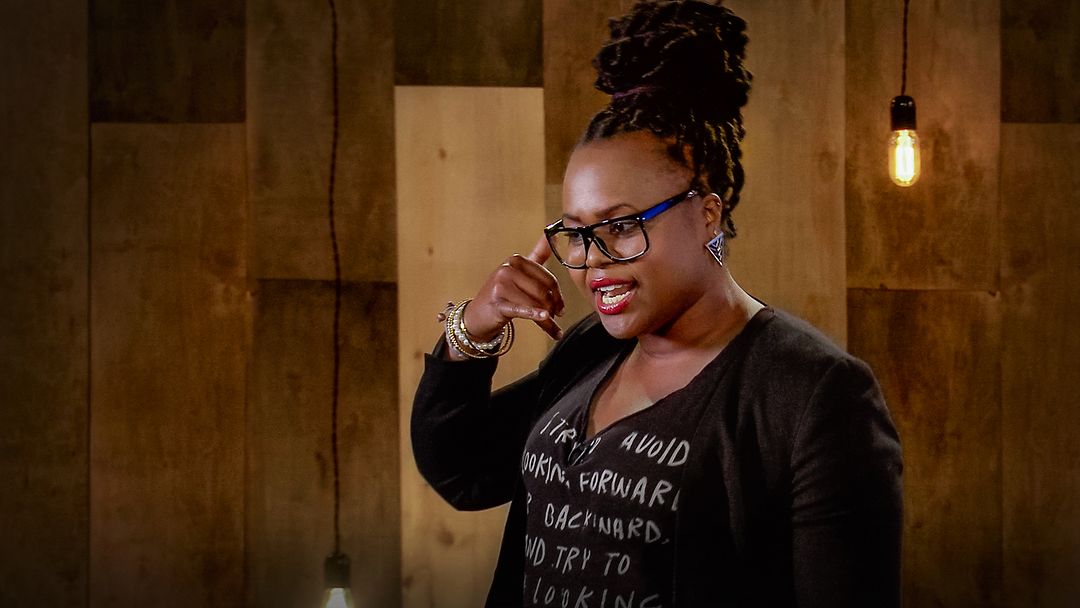
3 ways to speak English

For more tolerance, we need more ... tourism?
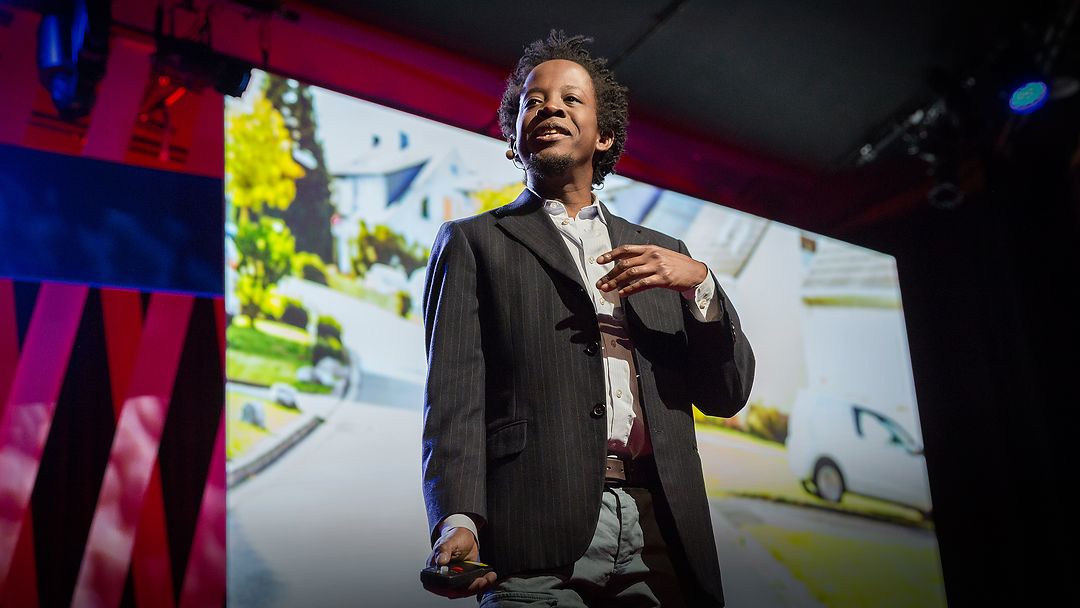
My road trip through the whitest towns in America

My immigration story

America's native prisoners of war
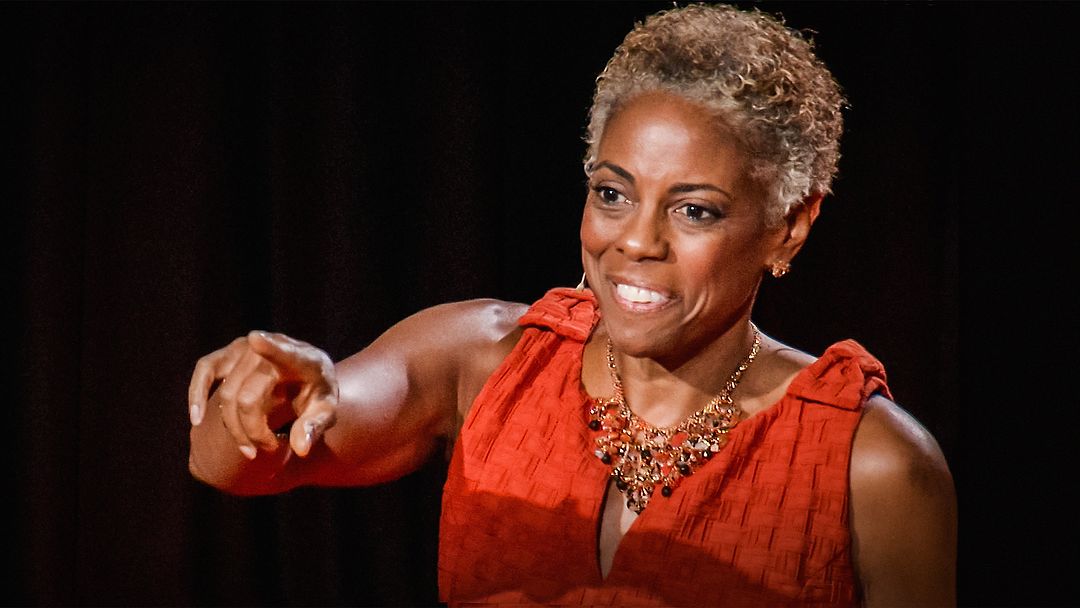
How to overcome our biases? Walk boldly toward them
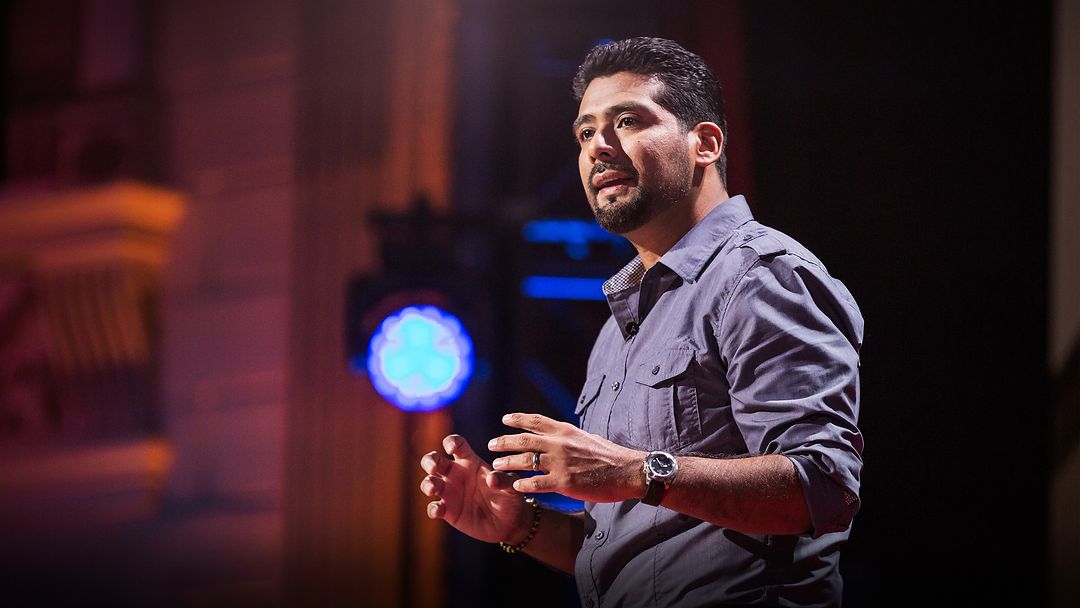
Help for kids the education system ignores

What it's like to be Muslim in America
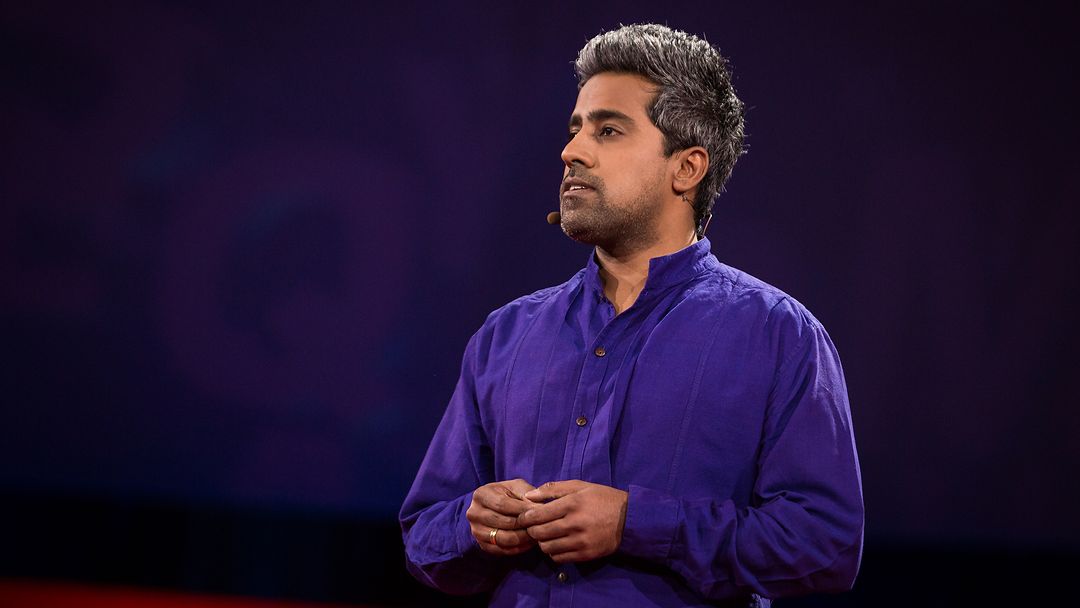
A tale of two Americas. And the mini-mart where they collided
- Buy Custom Assignment
- Custom College Papers
- Buy Dissertation
- Buy Research Papers
- Buy Custom Term Papers
- Cheap Custom Term Papers
- Custom Courseworks
- Custom Thesis Papers
- Custom Expository Essays
- Custom Plagiarism Check
- Cheap Custom Essay
- Custom Argumentative Essays
- Custom Case Study
- Custom Annotated Bibliography
- Custom Book Report
- How It Works
- +1 (888) 398 0091
- Essay Samples
- Essay Topics
- Research Topics
- Uncategorized
- Writing Tips
How to Write a Cultural Diversity Essay
December 14, 2016
Understanding Cultural Diversity
To write an effective cultural diversity essay, it is crucial to have a clear understanding of what cultural diversity truly means. Cultural diversity refers to the coexistence of different cultures, values, and traditions within a society. It encompasses differences in language, religion, beliefs, customs, and practices. Understanding cultural diversity involves recognizing and appreciating the unique perspectives and experiences that each culture brings.
When writing an essay on cultural diversity, it is important to explore the reasons behind its importance in today’s globalized world. This includes examining how cultural diversity promotes tolerance, understanding, and inclusivity. Additionally, understanding cultural diversity entails acknowledging the challenges and barriers faced by different cultural groups and examining strategies for achieving cultural harmony. By grasping the concept of cultural diversity, you can effectively convey your thoughts and insights in your essay, providing a comprehensive understanding to your readers.
Choosing a Topic for the Essay
Selecting the right topic is vital when writing a cultural diversity essay. With such a broad subject, it is important to narrow down your focus to a specific aspect or issue related to cultural diversity that interests you. Consider topics such as the impact of immigration on cultural diversity, the role of education in promoting cultural acceptance, or the influence of globalization on cultural identity.
When choosing a topic, ensure that it is researchable and allows for a comprehensive exploration of different perspectives. It is important to select a topic that you are passionate about, as this will help you maintain motivation and produce a well-written essay. Furthermore, consider the relevance and significance of your chosen topic in today’s society to ensure that your essay contributes to the discussion and provides valuable insights.
Possible Cultural Diversity Essay Topics:
- The Impact of Immigration on Cultural Diversity
- Cultural Assimilation versus Cultural Preservation
- Cultural Diversity in the Workplace: Benefits and Challenges
- Cultural Stereotypes and their Effects on Society
- Exploring Cultural Identity in a Globalized World
- The Role of Education in Promoting Cultural Acceptance
- Cultural Appropriation: Understanding the Controversy
- Gender Roles and Cultural Diversity
- Traditional versus Modern Practices in Different Cultures
- Cultural Diversity and Social Justice: Addressing Inequality
Organizing Your Thoughts
When writing a cultural diversity essay, it is crucial to organize your thoughts effectively to ensure a coherent and logical flow of ideas. Start by brainstorming and jotting down all the ideas, examples, and arguments that come to mind. Once you have a list of key points, group them into categories or themes that relate to your chosen topic.
Next, create an outline that includes an introduction, body paragraphs, and a conclusion. The introduction should provide a brief overview of cultural diversity and present a clear thesis statement. Each body paragraph should focus on a single idea or argument, supported by evidence and examples.
Consider using a logical structure such as comparing and contrasting different perspectives, discussing the historical context, or analyzing the impacts of cultural diversity. Finally, conclude your essay by summarizing your main points and reinforcing the significance of cultural diversity in contemporary society. By organizing your thoughts effectively, you will create a well-structured and impactful cultural diversity essay.
Writing an Effective Introduction
The introduction of a cultural diversity essay is the first opportunity to capture the reader’s attention and provide a clear direction for the essay. To craft an effective introduction, follow these tips:
- Start with a hook: Begin your introduction with an attention-grabbing statement, question, or anecdote that relates to cultural diversity. This will engage the reader and make them curious to learn more.
- Provide background information: Offer a concise background on the topic of cultural diversity, highlighting its significance and relevance in today’s society. This sets the stage for the essay and helps the reader understand the context.
- State the thesis statement: Clearly state your main argument or position on cultural diversity. The thesis statement should be concise, specific, and arguable. It establishes the purpose of the essay and gives the reader a roadmap of what to expect.
- Outline the main points: Briefly mention the main points or arguments that you will discuss in the body of the essay. This gives the reader an overview of the essay’s structure and keeps them engaged.
Remember, the introduction should be concise, captivating, and informative. It should set the tone for the essay and create a strong first impression for the reader. By following these guidelines, you can write an effective introduction that engages the reader and lays the foundation for a compelling cultural diversity essay.
Developing the Main Body
The main body of your cultural diversity essay is where you delve into the key arguments, ideas, and evidence that support your thesis statement. To effectively develop the main body of your essay, consider the following:
- Start with a clear topic sentence: Begin each paragraph with a concise and focused topic sentence that introduces the main point or argument you will discuss. This helps guide the reader through your essay and ensures a coherent flow.
- Provide evidence and examples: Support your arguments with relevant evidence and examples. This can include statistics, research findings, case studies, personal experiences, or cultural anecdotes. Use a mix of primary and secondary sources to strengthen your claims.
- Explore different perspectives: Cultural diversity is a complex and multifaceted topic. Consider discussing different perspectives or contrasting viewpoints within your essay. This demonstrates a comprehensive understanding of the subject and enriches your analysis.
- Use logical transitions: Ensure a smooth transition between paragraphs by using logical transitions. Connect ideas between paragraphs to maintain a cohesive and logical flow of thoughts.
- Consider counterarguments: Address potential counterarguments to your thesis statement. Acknowledge and refute opposing viewpoints to strengthen your own arguments and demonstrate critical thinking.
Remember to maintain a balanced approach, provide sufficient evidence for your claims, and avoid generalizations. By developing a well-structured and evidence-based main body in your cultural diversity essay, you can effectively present your ideas and engage the reader in a thought-provoking discussion.
Avoiding Stereotypes
When writing a cultural diversity essay, it is important to avoid stereotypes and generalizations that can perpetuate prejudice and discrimination. Instead, focus on presenting a nuanced and accurate portrayal of cultural diversity that acknowledges the complexity and diversity of different ethnic, racial, and cultural groups. To avoid stereotypes in your essay, consider the following:
- Avoid using sweeping generalizations or attributing traits to entire groups of people based on their cultural background.
- Use specific examples and evidence to illustrate your points and avoid assumptions.
- Acknowledge the diversity within cultures and avoid treating them as monolithic entities.
- Respect and consider multiple perspectives on cultural diversity, acknowledging that cultural experiences are complex and nuanced.
By avoiding stereotypes, you can present a thoughtful and objective analysis of cultural diversity that recognizes the complexity of the subject and contributes to a more informed and inclusive society.
Including Personal Experiences
When writing a cultural diversity essay, incorporating personal experiences can add depth, authenticity, and a unique perspective to your writing. Personal experiences allow you to connect with the topic on a deeper level and provide firsthand insights into cultural diversity. Here’s how to effectively include personal experiences in your cultural diversity essay:
- Choose relevant experiences: Select personal experiences that directly relate to the topic of cultural diversity. This could include encounters with different cultures, cross-cultural friendships, or experiences that highlight the impact of cultural diversity in your own life.
- Reflect on the significance: Share why these experiences are meaningful to you and how they have shaped your understanding of cultural diversity. Reflecting on your experiences adds a personal touch and demonstrates your engagement with the topic.
- Connect to broader themes: Situate your personal experiences within broader themes or issues related to cultural diversity. This could involve discussing the challenges and benefits of embracing cultural differences or sharing examples that highlight the importance of cultural understanding and acceptance.
- Maintain objectivity: While incorporating personal experiences, it is important to strike a balance between personal perspective and objective analysis. Avoid generalizations and ensure that your personal experiences are grounded in critical thinking and supported by evidence and research.
By including personal experiences, you can add a unique dimension to your cultural diversity essay, fostering a deeper connection with readers and enhancing the overall impact of your writing.
Analyzing Cultural Conflict and Harmony
Cultural diversity can often lead to conflicts or misunderstandings between different groups with different beliefs and values. It is important to analyze these conflicts and seek ways to promote harmony and understanding in your cultural diversity essay. Here are some tips for analyzing cultural conflict and harmony in your essay:
- Identify causes of conflict: Explore the underlying factors that contribute to conflict between different cultures. This could include issues such as cultural stereotypes, prejudice, discrimination, or misunderstanding.
- Discuss potential solutions: Consider ways to promote cultural harmony and understanding. This could include cultural education, intercultural communication, or promoting inclusive policies that support cultural diversity.
- Highlight success stories: Share examples of cultural harmony or success stories where cultural diversity has been successfully embraced and celebrated.
- Acknowledge challenges: Recognize the challenges involved in achieving cultural harmony, including power imbalances, political and economic factors, and historic tensions.
By analyzing cultural conflict and harmony, you can develop a more nuanced understanding of the complexities and opportunities that arise from cultural diversity. This can lead to meaningful insights and solutions that promote a more inclusive and harmonious society.
Writing the Conclusion
The conclusion of your cultural diversity essay should summarize the key points made in the main body and restate the thesis statement in a clear and concise way. Here’s how to write an effective conclusion for your essay:
- Summarize the key arguments: Begin by summarizing the main arguments or findings presented in the main body of your essay. This reminds the reader of the main points and demonstrates the coherence of your writing.
- Restate the thesis statement: The thesis statement should be restated in the conclusion, using different words to maintain interest and reinforce the message.
- Provide final thoughts: Use the conclusion to provide final thoughts or insights on the topic of cultural diversity. This could include a call to action, a prediction, or a reflection on the implications of the topic.
- Avoid introducing new information: The conclusion is not the place to introduce new information or arguments. Ensure that all ideas presented in the conclusion have been discussed in the main body.
- End with impact: End your conclusion with a lasting impact. This could involve a memorable quote, a thought-provoking question, or a powerful statement.
By following these guidelines, you can write a conclusion that reinforces the main message of your cultural diversity essay and leaves a lasting impression on the reader.
Diversity Essay Example
In today’s globalized world, cultural diversity is an undeniable reality. As I reflect upon my own experiences, I am reminded of the profound impact that cultural diversity has had on my life. Growing up in a multicultural neighborhood, I had the privilege of witnessing firsthand the richness that arises from the coexistence of different cultures.
One particular experience stands out in my memory. During a school project, my classmates and I were tasked with creating a presentation about a culture different from our own. I chose to explore the traditions and customs of an indigenous tribe from my country. Through extensive research and engaging conversations with members of that community, I gained a deeper understanding of their unique way of life.
This project taught me a valuable lesson about cultural diversity. It showed me that diversity is not limited to external appearances or superficial differences. It encompasses a wealth of knowledge, traditions, and perspectives that can enrich our lives and broaden our horizons.
Furthermore, this experience highlighted the importance of cultural respect and empathy. I realized that by approaching cultural diversity with an open mind and genuine curiosity, we can foster meaningful connections with individuals from different backgrounds. Rather than viewing diversity as a challenge or obstacle, it should be seen as an opportunity for growth and understanding.
In conclusion, my personal experiences have provided me with profound insights into the importance of embracing cultural diversity. This diversity essay example demonstrates the transformative power that cultural exchange can have on individuals and communities. By sharing our stories and celebrating our differences, we contribute to a more inclusive and harmonious society that values and respects the richness of cultural diversity.
Sociology Research Topics Ideas
Importance of Computer in Nursing Practice Essay
History Research Paper Topics For Students
By clicking “Continue”, you agree to our terms of service and privacy policy. We’ll occasionally send you promo and account related emails.
Latest Articles
Navigating the complexities of a Document-Based Question (DBQ) essay can be daunting, especially given its unique blend of historical analysis...
An introduction speech stands as your first opportunity to connect with an audience, setting the tone for the message you...
Embarking on the journey to write a rough draft for an essay is not just a task but a pivotal...
I want to feel as happy, as your customers do, so I'd better order now
We use cookies on our website to give you the most relevant experience by remembering your preferences and repeat visits. By clicking “Accept All”, you consent to the use of ALL the cookies. However, you may visit "Cookie Settings" to provide a controlled consent.

A Roadmap to Intercultural Proficiency pp 11–29 Cite as
Understanding Cultural Differences
- Frauke Bender 3
- First Online: 18 June 2022
710 Accesses
1 Citations
Part of the book series: Diversity and Inclusion Research ((DIRE))
Today’s globalized world is shaped by frequent intercultural encounters. Certain individuals perceive cultural differences (and hence cultural diversity) in certain situations as interesting and enriching, but there are also encounters that create frustration and disappointment, sometimes for reasons we may not understand. Therefore, a good understanding of cultural differences including how they might impact our way of thinking, feeling, and acting is instrumental in order to better navigate in cross-cultural environments. The ability to thoroughly comprehend cultural diversity relies on understanding the idea of “culture” itself.
This is a preview of subscription content, log in via an institution .
Buying options
- Available as PDF
- Read on any device
- Instant download
- Own it forever
- Available as EPUB and PDF
- Compact, lightweight edition
- Dispatched in 3 to 5 business days
- Free shipping worldwide - see info
- Durable hardcover edition
Tax calculation will be finalised at checkout
Purchases are for personal use only
The term “intercultural encounter” refers to an experience with someone from another cultural background, regardless of the location.
Hill and Hult ( 2017 ), p. 112
Social institution is understood as “a complex of positions, roles, norms, and values lodged in particular types of social structures and organizing relatively stable patterns of human resources with respect to fundamental problems in…sustaining viable societal structures within a given environment” (Nohria & Eccles, 1992 , p. 47).
Hill and Hult ( 2017 ), p. 96 ff
Hill and Hult ( 2017 ), p. 113
Hill and Hult ( 2017 ), p. 102
Hill and Hult ( 2017 ), Chaps. 2 and 4
See Sect. 3.3 for more details.
The World Values Survey (WVS) is a global research project that explores people’s values and beliefs, how they change over time, and what social and political impact they have. It is carried out by a worldwide network of social scientists who, since 1981, have conducted representative national surveys in almost 100 countries. The World Values Survey uses the sample survey as its mode of data collection, a systematic and standardized approach to collect information through interviewing representative national samples of individuals.
Hinton, P ( 2017 )
One of the tools available for testing one’s own unconscious bias is the Implicit Association Test (IAT) developed by Greenwald et al. ( 1998 ). Though critics claim that the stability of the test is low for predicting individual outcomes, they acknowledge the outcomes across larger entities such as counties, cities, or states (Payne et al., 2018 ).
Adler, N. J. (1997). International dimensions of organizational behavior (3rd ed.). South-Western College Publishing.
Google Scholar
Barna, L. M. (1997). Stumbling blocks in intercultural communication. In L. A. Samovar & R. E. Porter (Eds.), Intercultural communication (8th ed.). Wadsworth.
Barrett, M., Byram, M., Lázár, I., Mompoint-Gaillard, P., & Philippou, S. (2014). Developing intercultural competence through education . Council of Europe.
Benet-Martínez, V., & Haritatos, J. (2005). Bicultural identity integration (BII): Components and psychosocial antecedents. Journal of Personality, 73 (4), 1015–1049.
Article Google Scholar
Bennett, M. (2013). Entry. In C. E. Cortés (Ed.), Multicultural America: A multimedia encyclopedia . Sage.
Berray, M. (2019). A critical literary review of the melting pot and salad bowl assimilation and integration theories. Journal of Ethnic and Cultural Studies, 6 (1), 142–151.
Brown, H. D. (2007). Principles of language learning and teaching . New York, NY: Pearson Education.
Damen, L. (1987). Culture learning: The fifth dimension in the language classroom . Addison-Wesley.
Devine, P. G. (1989). Stereotypes and prejudice: Their automatic and controlled components. Journal of Personality & Social Psychology, 56 (1), 5–18.
Fitzsimmons, S. R. (2013). Multicultural employees: A framework for understanding how they contribute to organizations. Academy of Management Review, 38 (4), 525–549.
Fitzsimmons, S. R., Liao, Y., & Thomas, D. C. (2017). From crossing cultures to straddling them: An empirical examination of outcomes for multicultural employees. Journal of International Business Studies, 48 , 63–89. https://doi.org/10.1057/s41267-016-0053-9
Frese M. (2015). Cultural practices, norms, and values. Journal of Cross-Cultural Psychology, 46 (10), 1327–1330. https://doi.org/10.1177/0022022115600267
Greenwald, A. G., McGhee, D. E., & Schwartz, J. L. K. (1998). Measuring individual differences in implicit cognition: The implicit association test. Journal of Personality and Social Psychology, 74 (6), 1464–1480.
Hall, E. T. (1959). The silent language . Doubleday.
Hill, C. W. L. and Hult, G. T. (2017). International business: Competing in the global marketplace . New York, NY: McGraw-Hill Education.
Hinton, P. (2017). Implicit stereotypes and the predictive brain: Cognition and culture in “biased” person perception. Palgrave Commun, 3 , 17086. (2017). https://doi.org/10.1057/palcomms.2017.86
Hinton, P. R. (2000). Stereotypes, cognition and culture . Psychology Press.
Hofstede, G. (1991). Cultures and organizations: Software of the mind . McGraw-Hill.
Hofstede, G. (1994). Cultures and organizations: Software of the mind . Harper Collins Business.
Hofstede, G. (2001). Culture’s consequences: Comparing values, behaviors, institutions and organizations across nations . Sage Publications. Thousand Oaks.
Hofstede, G., & Hofstede, G. J. (2005). Cultures and organizations: Software of the mind . McGraw-Hill.
Hofstede, G. J. (2009). The moral circle in intercultural competence. Trust across cultures. In D. K. Deardorff (Ed.), The SAGE handbook of intercultural competence (pp. 85–99). Sage.
Chapter Google Scholar
Hofstede, G., Hofstede, G. J., & Minkov, M. (2010). Cultures and organizations: Software of the mind (3rd ed.). McGraw-Hill Education.
Hong, Y.-Y., Morris, M. W., Chiu, C.-Y., & Benet-Martínez, V. (2000). Multicultural minds: A dynamic constructivist approach to culture and cognition. American Psychologist, 55 , 709–720.
House, R. J., Hanges, P.J., Javidan, M., Dorfman, P. W., Gupta, V. (2004). Culture, leadership, and organizations: The GLOBE study of 62 societies . Sage Publications. Thousand Oaks.
Inglehart, R., & Baker, W. E. (2000). Modernization, cultural change, and the persistence of traditional values. American Sociological Review, 65 (1), 19–51. https://doi.org/10.2307/2657288
Inglehart, R., & Welzel, C. (2010). Changing mass priorities: The link between modernization and democracy. Perspectives on Politics, 8 (2), 551–567. https://doi.org/10.1017/S1537592710001258
Jandt, F. E. (2001). Intercultural communication: An introduction (Third ed.). Sage.
Kirkman, B. L., Lowe, K. B., & Gibson, C. B. (2006). A quarter century of Culture’s consequences: A review of empirical research incorporating Hofstede’s cultural values framework. Journal of Inernational Business Studies, 37 , 285–320. https://doi.org/10.1057/palgrave.jibs.8400202
Knafo, A., Roccas, S., & Sagiv, L. (2011). The value of values in cross-cultural research: A special issue in honor of Shalom Schwartz. Journal of Cross-Cultural Psychology, 42 (2), 178–185. https://doi.org/10.1177/0022022110396863
Kuper, A. (1999). Culture: The Anthropologists’ account . Harvard University Press.
Book Google Scholar
Kroeber, A. L., & Kluckhohn, C. (1952). Culture: A critical review of concepts and definitions . Peabody Museum.
Meyer, E. (2014). The culture map: Breaking through the invisible boundaries of global business . Public Affairs.
Nguyen, A.-M. D., & Benet-Martínez, V. (2007). Biculturalism unpacked: Components, measurement, individual differences, and outcomes. Social and Personality Psychology Compass, 1 , 101–114.
Nohria, N. and Eccles, R. G. (1992). Networks and Organizations: Structure, Form, and Action. : Harvard Business School Press.
Osland, J., Bird, A., Delano, J., & Jacob, M. (2000). Beyond sophisticated stereotyping: Cultural Sensemaking in context [and executive commentaries]. The Academy of Management Executive (1993–2005), 14 (1), 65–79. www.jstor.org/stable/4165609
Payne, K., Niemi, L., & Doris, J. M. (2018). How to think about “implicit bias” . Scientific American.
Samovar, L. A., & Porter, R. E. (1991). Communication between cultures . Wadsworth.
Schwartz, S. H. (2012). An overview of the Schwartz theory of basic values. Online Readings in Psychology and Culture, 2 (1).
Spencer-Oatey, H. (2008). Culturally speaking. Culture, communication and politeness theory (2nd ed.). Continuum.
Tylor, E. B. (1920). Primitive culture: Researches into the development of mythology, philosophy, religion, language, art, and custom . John Murray.
UNESCO Universal Declaration of Cultural Diversity. (2002). unesdoc.unesco.org . Retrieved 20 May 2022.
Verkuyten, M., & Pouliasi, K. (2006). Biculturalism and group identification: The mediating role of identification in cultural frame switching. Journal of Cross-Cultural Psychology, 2006 (37), 312–326. https://doi.org/10.1177/0022022106286926
Yamazaki, M. (2000). Individualism and the Japanese . Tokyo: Japan Echo, Inc.
Yoshikawa, M. J. (1987). Cross-cultural adaptation and perceptual development. In Y. Y. Kim & W. B. Gudykunst (Eds.), International and intercultural communication annual: Vol. XI. Cross-cultural adaptation: Current approaches (pp. 140–148). Sage.
Download references
Author information
Authors and affiliations.
Anderson College of Business and Computing, Regis University, Denver, CO, USA
Frauke Bender
You can also search for this author in PubMed Google Scholar
Rights and permissions
Reprints and permissions
Copyright information
© 2022 The Author(s), under exclusive license to Springer Nature Switzerland AG
About this chapter
Cite this chapter.
Bender, F. (2022). Understanding Cultural Differences. In: A Roadmap to Intercultural Proficiency. Diversity and Inclusion Research. Springer, Cham. https://doi.org/10.1007/978-3-031-04899-9_2
Download citation
DOI : https://doi.org/10.1007/978-3-031-04899-9_2
Published : 18 June 2022
Publisher Name : Springer, Cham
Print ISBN : 978-3-031-04898-2
Online ISBN : 978-3-031-04899-9
eBook Packages : Business and Management Business and Management (R0)
Share this chapter
Anyone you share the following link with will be able to read this content:
Sorry, a shareable link is not currently available for this article.
Provided by the Springer Nature SharedIt content-sharing initiative
- Publish with us
Policies and ethics
- Find a journal
- Track your research
What Is Culture Essay Writing – Expert’s Guide
- Essay Tips&Tricks
- Essay Writing Guides

Culture is an important component of human life, which helps to find like-minded people. We should not forget that culture can be expressed in different situations, such as food, music, outlook on life, and even clothing. It is important to understand that despite differences in different cultures, you should always respect and be friendly to others.
Culture Essay Explained
To begin with, let’s figure out what a culture essay is. Simply put, this is a kind of description of a culture, starting from your thoughts and opinions. In society, culture helps to understand what norms exist for people. You can write culture essays on completely different topics related to culture because it manifests itself in all components of our lives. These are dances, art, technology, and even music.
Culture determines what is acceptable and what is unacceptable in any society. Based on this, it can be understood that a culture essay is a popular writing style because it can describe your personal opinion about culture and express your thoughts and views.
What Is the Importance of Culture in Human Life?
Culture plays a very important role in our life. It helps people to ensure social well-being in society and find like-minded people. Culture in society is one of the main life factors that help people express their education and development. You can understand a cultured person or not by the way he communicates with people in society.
For many people, culture is as important a factor as their personal lives and family values. Watching people, you might notice that people who adhere to the same culture immediately have an inextricable connection and many common interests because such people are connected not only by common views on the world but also by tastes in food, traditions, and much more.
How to Write a Culture Essay Outline
To write a successful culture essay, it is important to understand where to start and stick to a clear plan. A writing plan should be in each piece so the reader can understand and navigate the article’s essence.
This is especially true for a research paper and an argumentative essay because, in such reports, you must specifically describe the subject of research and argue your conclusions. But writing structure is just as important for culture essays, so here are the important steps in writing a plan:
First, you need to consider the introduction because it is regarded as one of the most important parts of the essay. Here you should present the most important information discussed in the main part so that the reader is interested and wants to read the text further.
Create a short thesis with which you will convey the essence of the essay to the audience and briefly express your opinion on this topic.
Work on the basic information you will be using. It is very important to write about those things that are interesting to you and that you understand. Suppose this is a new topic for you. In that case, it is best to check the integrity of the information on several sources several times so as not to misinform the reader and arouse the desired interest in your article.
Write your findings. In many essay examples, the author writes his conclusion based on personal experience and thoughts. Never try to write similarly. For a successful culture essay conclusion, noting how you feel and conveying your emotions from personal experience and knowledge is important.
Writing an Introduction to a Culture Essay
The introduction is one of the most important parts of any essay. When starting to write an introduction, you should already understand what you will talk to the reader about in the future. It is important to remember that the information you use in this section should be discussed in the main part and be argued with facts and supported by your real-life examples.
Writing an introduction is often difficult and energy-consuming for a writer because this paragraph should contain only the most important information from your text that will be able to interest the reader.
To make it easier, you can write the introduction after you’ve completed the main text, but it’s important to decide on the topic and abstract first. For example, at the beginning of the culture essay, you need to tell the audience about the issue you will be discussing and then familiarize the readers with the thesis.
Next, talk with the reader about your opinion on this topic and tell a little about yourself so that people can imagine the person who writes about the issue of interest to them.

Writing a Body of a Culture Essay
The body of your culture essay should introduce the reader to the culture you are researching. Therefore, it is important to convey all the emotions when writing so that people have a clear picture and understanding of the culture. A culture essay is a combination of a descriptive essay and an argumentative essay where you also describe and argue your opinion on a given topic.
The body of your essay may include several paragraphs and headings. In each paragraph, you will describe different aspects of this culture and your arguments for them. This section should explain to the reader why you have chosen this particular topic for writing so that people clearly understand your interest in the topic of culture.
Using personal examples and arguments from your life best draws the reader. It is important to write in a language understandable to the reader. Try to use simple, uncomplicated phrases with which you will arouse confidence and pleasant emotions in your audience. Imagine that you are talking to a reader. Writing an essay is a simple and accessible language that will help connect the reader and keep them interested.
Writing a Conclusion for a Culture Essay
After you have written the main part of your essay, you should summarize all of the above. To do this, you must analyze all the information and briefly state it to the reader. It is important not to deviate from your opinion and only try to back it up with appropriate phrases. In conclusion, you can once again repeat your statement about this culture or emphasize its main nuances.
In many essay examples, the authors write a huge paragraph with conclusions, touching on other topics there that have nothing to do with this, so you shouldn’t do it because, in conclusion, the main thing is to write it short and clear so that the reader can immediately understand the whole essence of what you wrote on this section.
Try to choose the right words and not pour water just like that. The main thing in this paragraph is the logical compilation of the results of all of the above.
The Most Interesting Cultural Topics
Culture essays are one of the best ways to do personal research about culture. In this kind of descriptive essay, you can analyze a huge number of topics and traditions of a particular culture and learn about the cultural origins of different types of people.
When choosing a topic for writing a culture essay, you need to be very serious and try to select the case that you will be interested in discussing, and you can describe all aspects of culture in such colors so that the reader can share your point of view and get carried away reading the article. So here are some interesting topics to talk about in your culture essay:
- Similarities between different cultures
- The influence of religion on culture
- The difference between the cultures of other continents
- Gender characteristics and the impact of cultures on them
- The role of culture in the personal growth of a person
- Popular cultures
- How is the Internet changing culture?
Tips for Writing a Successful Culture Essay
It’s no secret that before you start writing an essay, you need to create a so-called draft, in which you indicate for yourself all the most important points of the article and determine the sequence in which information is presented.
In a culture essay, it is important to adhere to the structure for the reader to understand what you are writing about. Here are some tips on how to make your essay successful and interesting:
Be Responsible in Your Topic Selection Process
The cultural topic is very relevant and extensive, so you should have no problem choosing. However, suppose you cannot decide which topic you would like to consider. In that case, you have the opportunity to look at a list of interesting and relevant issues on the Internet and then write an essay with a personal opinion on this matter. You can read other essay examples, but the main thing is not to use another author’s opinion in your article; this essay should be written based on personal experience and your own opinion.
Choosing a topic can seem quite complicated because you have to decide what you will have to communicate with your readers about, having previously studied all the nuances and made certain personal conclusions about it.
Make Sure to Express Your Unique Views
Culture essay aims to express personal views and thoughts on the topic you are discussing. Therefore, try to describe your opinion and understanding of this topic as clearly and reasonably as possible.
Despite this, you can use knowledge and information from other sources, but if you use it in your text, it is important to indicate exactly where you got this information from so that no plagiarism is detected during the critical writing report assessment, which is very important for an essay of this kind.
Avoid Repetition
For example, if you use the same phrase several times in the text, the best option would be to rephrase it so that it does not change its meaning but sounds different at the same time.
Use Only Proven Information
Imagine that you are writing a research paper and carefully studying the chosen topic. In no case do not use fictitious facts in the text. Instead, only reliable information should be supported by your arguments.
Utilize Linear Writing Style
Use the linear writing style of the culture essay. This will help the reader to read your article in a logical and structured way continuously.
Write a Clear Thesis and Stick To Your Position Throughout the Essay
Write in plain language that is easy for the reader to understand. Do not use complicated terms and phrases. The reader should feel as if you are talking to him.
Example of a Culture Essay and Essay Writing Services
We will look at the culture essay, which reveals the meaning of culture and how it changes and develops in the modern world. This one of the decent essay examples discusses how culture affects our lives and explains how different cultures exist worldwide.
Introduction
1.1 Definition of the term “Culture”
1.2 A story about the origin of culture and its development
1.3 Thesis: Culture is one of the main factors in our life and the lives of every person. Although culture changes over time, it remains in each of us
- What does culture mean?
2.1 Culture reflects the inner qualities of a person
2.2 Culture develops according to the development in our life
- Differences between different cultures
3.1 What are the differences, and why do you need to understand cultural differences
- What is the purpose of culture in human life?
Culture is a kind of collection of all parts of society. This is a huge complex of different beliefs and thoughts of people that were created over time. Culture can change depending on the other factors that influence it, as it keeps up with the times, and we all know that concepts and views can change over time. Each country has its own culture and traditions, and people in different countries express themselves in this way.
Having studied the culture of another country, you can understand the way of thinking of the people who live there and understand their values. To understand a person of another nation, it is enough to study his culture in detail.
Since culture is an indicator of human fulfillment, it can change at different times and places and remain individual for each nation.
What Does Culture Mean?
Culture describes the concepts and attitudes of people in different groups. People themselves create their own culture, this does not happen immediately, but after a long time, despite this, it exists. Other groups of people can be of the same culture, but they will still have completely different views on life and concepts. In the process of life, a person’s opinions and thoughts may change, but faith in one’s culture remains unchanged.
Differences Between Different Cultures
The differences between different cultures can depend on many factors, personal moral principles, political views, and even differences in musical tastes or food tastes. For example, in many countries, people do not eat pork meat, while in others, it is the norm. Therefore, when communicating in or coming into a society where there are people of other cultural concepts, it is important to consider other people’s interests so that respect appears in the group.
Understanding cultural differences of this kind will help to find mutual understanding among people and make them a single whole. Each person must respect the culture and views of other people, and only then will understanding and love reign in our world.
What Is the Purpose of Culture in Human Life?
Culture is important in all moments of human life, especially when you are in society. For example, when you come to a new job, you find yourself in a team where everyone has different thoughts and views. Therefore, it is important to respect the opinions of other people and in no case try to prove your point of view to others. Culture is also very important because, to some extent, it helps to find like-minded people and create a warm and friendly atmosphere in society.
If you have any difficulties writing a culture essay, you can always turn to essay writing service , where you will meet real professionals who will answer all your questions and do the hard work for you at an excellent price and in a short time. Moreover, you can be sure that each author has a degree in the field of culture, and your essay will be written with high quality and success.
Business Essay and the Best Way of Its Writing
Business is an essential aspect of today’s evolving world. It is a lucrative industry that impacts many sectors, including education. Business-related courses are popular as many students are pursuing the… Read More
- Academic Writing Tips

All About Persuasive Essay Writing
Writing a persuasive essay requires expressing your viewpoint and convincing readers of its rightfulness. Many struggle with completing this type of written assignment because of a lack of proper writing… Read More

How to write an anthropology essay perfectly?
Stuck with an anthropology essay with no help in sight? Anthropology essay writing is not a simple task. Not many college students can handle such a paper. An anthropology essay… Read More

Table of contents
Cultural Identity Essay
27 August, 2020
12 minutes read
Author: Elizabeth Brown
No matter where you study, composing essays of any type and complexity is a critical component in any studying program. Most likely, you have already been assigned the task to write a cultural identity essay, which is an essay that has to do a lot with your personality and cultural background. In essence, writing a cultural identity essay is fundamental for providing the reader with an understanding of who you are and which outlook you have. This may include the topics of religion, traditions, ethnicity, race, and so on. So, what shall you do to compose a winning cultural identity essay?

Cultural Identity Paper: Definitions, Goals & Topics

Before starting off with a cultural identity essay, it is fundamental to uncover what is particular about this type of paper. First and foremost, it will be rather logical to begin with giving a general and straightforward definition of a cultural identity essay. In essence, cultural identity essay implies outlining the role of the culture in defining your outlook, shaping your personality, points of view regarding a multitude of matters, and forming your qualities and beliefs. Given a simpler definition, a cultural identity essay requires you to write about how culture has influenced your personality and yourself in general. So in this kind of essay you as a narrator need to give an understanding of who you are, which strengths you have, and what your solid life position is.
Yet, the goal of a cultural identity essay is not strictly limited to describing who you are and merely outlining your biography. Instead, this type of essay pursues specific objectives, achieving which is a perfect indicator of how high-quality your essay is. Initially, the primary goal implies outlining your cultural focus and why it makes you peculiar. For instance, if you are a french adolescent living in Canada, you may describe what is so special about it: traditions of the community, beliefs, opinions, approaches. Basically, you may talk about the principles of the society as well as its beliefs that made you become the person you are today.
So far, cultural identity is a rather broad topic, so you will likely have a multitude of fascinating ideas for your paper. For instance, some of the most attention-grabbing topics for a personal cultural identity essay are:
- Memorable traditions of your community
- A cultural event that has influenced your personality
- Influential people in your community
- Locations and places that tell a lot about your culture and identity
Cultural Identity Essay Structure
As you might have already guessed, composing an essay on cultural identity might turn out to be fascinating but somewhat challenging. Even though the spectrum of topics is rather broad, the question of how to create the most appropriate and appealing structure remains open.
Like any other kind of an academic essay, a cultural identity essay must compose of three parts: introduction, body, and concluding remarks. Let’s take a more detailed look at each of the components:
Introduction
Starting to write an essay is most likely one of the most time-consuming and mind-challenging procedures. Therefore, you can postpone writing your introduction and approach it right after you finish body paragraphs. Nevertheless, you should think of a suitable topic as well as come up with an explicit thesis. At the beginning of the introduction section, give some hints regarding the matter you are going to discuss. You have to mention your thesis statement after you have briefly guided the reader through the topic. You can also think of indicating some vital information about yourself, which is, of course, relevant to the topic you selected.
Your main body should reveal your ideas and arguments. Most likely, it will consist of 3-5 paragraphs that are more or less equal in size. What you have to keep in mind to compose a sound ‘my cultural identity essay’ is the argumentation. In particular, always remember to reveal an argument and back it up with evidence in each body paragraph. And, of course, try to stick to the topic and make sure that you answer the overall question that you stated in your topic. Besides, always keep your thesis statement in mind: make sure that none of its components is left without your attention and argumentation.
Conclusion
Finally, after you are all finished with body paragraphs and introduction, briefly summarize all the points in your final remarks section. Paraphrase what you have already revealed in the main body, and make sure you logically lead the reader to the overall argument. Indicate your cultural identity once again and draw a bottom line regarding how your culture has influenced your personality.
Best Tips For Writing Cultural Identity Essay
Writing a ‘cultural identity essay about myself’ might be somewhat challenging at first. However, you will no longer struggle if you take a couple of plain tips into consideration. Following the tips below will give you some sound and reasonable cultural identity essay ideas as well as make the writing process much more pleasant:
- Start off by creating an outline. The reason why most students struggle with creating a cultural identity essay lies behind a weak structure. The best way to organize your ideas and let them flow logically is to come up with a helpful outline. Having a reference to build on is incredibly useful, and it allows your essay to look polished.
- Remember to write about yourself. The task of a cultural identity essay implies not focusing on your culture per se, but to talk about how it shaped your personality. So, switch your focus to describing who you are and what your attitudes and positions are.
- Think of the most fundamental cultural aspects. Needless to say, you first need to come up with a couple of ideas to be based upon in your paper. So, brainstorm all the possible ideas and try to decide which of them deserve the most attention. In essence, try to determine which of the aspects affected your personality the most.
- Edit and proofread before submitting your paper. Of course, the content and the coherence of your essay’s structure play a crucial role. But the grammatical correctness matters a lot too. Even if you are a native speaker, you may still make accidental errors in the text. To avoid the situation when unintentional mistakes spoil the impression from your essay, always double check your cultural identity essay.
A life lesson in Romeo and Juliet taught by death
Due to human nature, we draw conclusions only when life gives us a lesson since the experience of others is not so effective and powerful. Therefore, when analyzing and sorting out common problems we face, we may trace a parallel with well-known book characters or real historical figures. Moreover, we often compare our situations with […]

Ethical Research Paper Topics
Writing a research paper on ethics is not an easy task, especially if you do not possess excellent writing skills and do not like to contemplate controversial questions. But an ethics course is obligatory in all higher education institutions, and students have to look for a way out and be creative. When you find an […]

Art Research Paper Topics
Students obtaining degrees in fine art and art & design programs most commonly need to write a paper on art topics. However, this subject is becoming more popular in educational institutions for expanding students’ horizons. Thus, both groups of receivers of education: those who are into arts and those who only get acquainted with art […]
- Admission Essay
- Statement of Purpose Editing
- Personal Statement Editing
- Recommendation Letter
- Motivation Letter
- Cover Letter
- Supplemental Essay
- Letter of Continued Interest
- Scholarship Essay
- Role Model Essay
- Our Editors
- College Admission Essay Examples
- College Cover Letter Examples
- College Personal Statement Examples
- Graduate Personal Statement Examples
- Graduate Statement of Purpose Examples
- MBA Essay Examples
- MBA Personal Statement Examples
- MBA Resume Examples
- MBA Recommendation Letter Examples
- Medical School Personal Statement Examples
- Medical School Recommendation Letter Examples
- Pricing Plans
- Public Health
- Dissertation
- Research Paper
- Thesis Editing
- Academic Editing
- Motivation letter
- Letter of Recommendation
- Personal Statement
- Statement of Purpose
Essay About Cultural Differences: Writing Guidelines
EssayEdge > Blog > Essay About Cultural Differences: Writing Guidelines
It is often difficult for international students to know what to write for their personal statement for US universities. My advice is to write about what you know best: your dreams and goals. Cultural diversity is a major factor in the composition of many university classrooms, so celebrate your differences while you tell the reader in your personal statement why you want to learn about your similarities by studying abroad.

There are many ways to approach the personal statement, including the most popular: begin with a detailed description of your background, from childhood to now. Where did you grow up? In a small town on a remote mountainside in China, perhaps? In a large family in a bustling city? Describe the location so the reader will be able to ‘see’ it. Give context to your essay’s introduction to capture the reader’s interest.
Write about what you know best – not what you think the reader will want to read. Be yourself – analytical, brave, adventurous, compassionate, driven, quiet, tenacious. Describe your family and cultural background, hardships, and education. Offer a specific single story to create an image in the reader’s mind so strong they will not be able to forget it – for all the right reasons. The story should illustrate your motivation to study in the United States.
If there are people important to your story, tell the reader about them with such care and detail that the admissions representative will be able to see their eye color and work-roughened hands. What are your dreams that motivate you to travel far away from home to study at a foreign university? Everyone’s story is unique. Share the reasons behind your educational goals with the reader. Do you want to teach children in remote villages? Or do you want to start a company or an NGO to fund improvements to the water supply or infrastructure of the country of your childhood? Do you want to study marketing or accounting to be able to take over the family business? If you grew up in a village with no doctor, do you hope to study nursing or medicine to return to help others? Or do you want to create films that will tell the story for you in pictures? Your dreams belong to you.
Be personal, honest, concise, and clear while writing your personal statement. Your own voice should shine through your words, allowing the reader to understand why you want to study in an unknown environment in a different culture. Write as you would talk to someone in a face-to-face meeting and avoid using too many words discovered through the thesaurus. Communicate your motivation, such as studying with outstanding teachers and using cutting-edge technology, having access to advances in laboratory research, and enjoying the opportunity to learn more about the world so that you can have a greater impact on your corner of it.
Need help? Check out EssayEdge editing services:
Near the conclusion of your personal statement, tell the reader what special talents you offer the university, such as leadership abilities, strong communication skills, musical talent, or expertise in mathematics or computer science. What will be your special value to the university? Perhaps you will engage in thought-provoking classroom discussions, sharing a perspective on politics or philosophy or science that the other students had not considered. Or you may introduce your friends to the literature and music of your culture. Write about what you will ‘bring to the table’ of the campus community – not just what you will learn from the experience.
In your conclusion, tell the reader what you plan to do with the degree that you earn from their institution. Will you stay in the US for further education or to work in your field or will you return home to use the degree there?
If you are not sure yet what your long-term plans are, you can offer a few options that you are considering so the reader will know that you are a serious student with dreams and goals. Share your enthusiasm for the adventure of being an international student and feel free to dream big.
As always, I look forward to your comments and questions.
If you’re a foreign student applying to a US college, choosing a topic for an admission essay shouldn’t be a problem. Cultural differences are an amazing theme to cover. It lets you show your background and your knowledge of different cultures and make your personality stand out. If you get stuck with finishing your paper, send it to our essay editing company
You may also like International Students – Do You Want to Fit In Or Stand Out?
Popular Posts
June 2, 2022 How To Start a Scholarship Essay: Catch Reader’s Attention Fast
May 16, 2022 My Role Model Essay: A Few Ways to Elaborate on The Subject
May 3, 2022 How To Start a Personal Statement? | Writing Tips and Samples
Related Posts
April 25, 2023 5 Colleges that Will Provide Students with a Great Return on Investment
March 1, 2023 Questions to Ask In a College Interview
January 30, 2023 How to Write a Hook For a College Essay + [Examples]
©2024 Student Media LLC. All rights reserved.
EssayEdge: Essay Editing & Proofreading Service.
Our mission is to prepare you for academic and career success.
- Log In
- Sign Up
- Forgot password
Unable to log in? Please clear your browser's cache and then refresh this page and try again
Reset password Please enter your email address to request a password reset.

Check your email We’ve just sent a password reset link to your email.
This information is used to create your account
The Cultural Differences Analysis
Every single individual is a member of a specific culture that influences their worldview, opinions about different phenomena, behaviors, and daily activities. Additionally, the technological advancements and traveling give people a possibility to interact with others from all around the world, establish strong personal relationships with them, and enrich knowledge. For this reason, it seems essential to understand the concept of culture better and start doing that as soon as possible in order to prevent the appearance of cultural misunderstandings and conflicts.
In order to understand culture, it is primarily essential to define what it is. As suggested by Zimmermann, “culture is the characteristics and knowledge of a particular group of people, encompassing language, religion, cuisine, social habits, music and arts” (2017). However, the definition can go much further by taking into consideration the distinguishing features of specific nationalities, behavioral patterns and interactions, socialization, and cognitive constructs. In general, every single thing, such as clothes, food, language, music, character, and many more, is the constituent of a specific culture that is authentic and different from any other one in the world.
Since it is clear that every single culture is unique, it is useful to know the exact differences that can be noticeable. One of the most obvious differences is individualism versus collectivism. Some cultures, such as the one in the United States, points out on the importance of personal development, realization, independency, and autonomy (“Nine cultural value differences,” n.d.). Thus, in individualistic cultures the focus is on the one person and their achievements. At the same time, in collectivistic cultures, people are more likely to see themselves as members of groups and communities (“Nine cultural value differences,” n.d.). Collective harmony, social interdependence, and family are extremely valued by these cultures.
Most of the cultural differences can be noticed in the specificities of communication. For example, highly people-oriented cultures are usually extremely open and easy going. Individuals are much more likely to remain in close proximity, engage in deep conversations, and keep eye contact (Atkinson, 2020). On the other hand, all the actions can be seen as inappropriate by people from cultures that value privacy and a small number of people that a close and can share the most important moments with them. Very often, this specific difference leads to misunderstandings between cultures and prevents people from developing relationships. Therefore, people have to start educating themselves and adapt their behavior in order to engage in respectful and appropriate communication with those around.
To summarize, culture is a complicated subject that has to be researched thoroughly. While having a possibility to travel around the world, meet new people, and establish personal relationships with them, individuals have to educate themselves about the cultural differences that exists and can lead to misunderstandings. The ones mentioned are only a few from many differences that arise in cross-cultural communication. Learning more about them and training oneself to adapt can not only save time but also contribute to the creation of a meaningful friendship with another person.
Atkinson, G. (2020). 6 examples of cultural differences in business communication . Berlitz. Web.
Nine cultural value differences you need to know . (n.d.). Web.
Zimmermann, K. A. (2017). What is culture? Live Science. Web.
Cite this paper
- Chicago (N-B)
- Chicago (A-D)
StudyCorgi. (2023, February 6). The Cultural Differences Analysis. https://studycorgi.com/the-cultural-differences-analysis/
"The Cultural Differences Analysis." StudyCorgi , 6 Feb. 2023, studycorgi.com/the-cultural-differences-analysis/.
StudyCorgi . (2023) 'The Cultural Differences Analysis'. 6 February.
1. StudyCorgi . "The Cultural Differences Analysis." February 6, 2023. https://studycorgi.com/the-cultural-differences-analysis/.
Bibliography
StudyCorgi . "The Cultural Differences Analysis." February 6, 2023. https://studycorgi.com/the-cultural-differences-analysis/.
StudyCorgi . 2023. "The Cultural Differences Analysis." February 6, 2023. https://studycorgi.com/the-cultural-differences-analysis/.
This paper, “The Cultural Differences Analysis”, was written and voluntary submitted to our free essay database by a straight-A student. Please ensure you properly reference the paper if you're using it to write your assignment.
Before publication, the StudyCorgi editorial team proofread and checked the paper to make sure it meets the highest standards in terms of grammar, punctuation, style, fact accuracy, copyright issues, and inclusive language. Last updated: February 6, 2023 .
If you are the author of this paper and no longer wish to have it published on StudyCorgi, request the removal . Please use the “ Donate your paper ” form to submit an essay.
IResearchNet
Cultural Differences
Cultural differences definition.
Cultural groups can differ widely in their beliefs about what is true, good, and efficient. The study of cultural differences combines perspectives in psychology and anthropology to understand a society’s signature pattern of beliefs, behavior, and social institutions and how these patterns compare and contrast to those of other cultural groups.
Cultural differences appear both between and within societies, for example, between Canadians and Japanese, and within the United States between Anglos and Latinos. Descriptions of cultural differences are made in context to the many similarities shared across human groups. Although a variety of attributes differ between cultures, there are also many similarities that exist across human societies. Moreover, even where there are differences between cultural groups, individual differences mean that not every person within a particular culture will have beliefs or exhibit behaviors that resemble predominant patterns in their society.
Academic Writing, Editing, Proofreading, And Problem Solving Services
Get 10% off with 24start discount code, cultural differences context and focus.

Cultural Differences Background and History
Humans have long been interested in cultural differences. The first written accounts of cultural diversity appear as far back as the 4th century B.C.E.in Herodotus’ description of the unique beliefs and customs among the different cultural groups that traded along the shores of the Black Sea. However, it was not until around the 19th century C.E. that scholars began to conduct systematic studies of unique cultural beliefs and practices, such as Alexis de Tocqueville’s writings about the unique aspects of early American culture and Max Weber’s analysis of how religious ideologies developed in Northern Europe created cultural differences in beliefs about the meaning of work. About 100 years later, the field of cultural anthropology emerged with an exclusive focus on understanding the nature of cultural differences around the world. Today, psychological research has brought new understanding about the nature of cultural differences and similarities by combining an anthropological focus on culture with sophisticated experimental methods developed in social and cognitive psychology. This area of research within social psychology is referred to as cultural psychology.
Before psychologists began to study culture, it was often assumed that knowledge gained from psychological research conducted within one culture applied to all humans. This assumption about the universality of human psychology was challenged when researchers then tried to replicate studies in other cultures and found very different results for a number of important phenomena. For example, psychological experiments showing that people tend to exert less effort when working in a group versus alone showed an opposite pattern in East Asian societies. There, people tend to exert less effort when working alone compared to when working in a group. Further, studies conducted in India, and later in Japan, showed an opposite pattern to earlier research conducted in the United States—that people tend to overestimate the influence of personality and underestimate the influence of situational factors on behavior.
Cultural Differences Evidence
Three broad types of evidence have been used to demonstrate cultural differences. First, in-depth studies of single cultures have found a variety of culturally unique ways people think about and engage in interpersonal relations. For example, within Mexico, interpersonal relations are characterized by a sincere emphasis on proactively creating interpersonal harmony (i.e., simpatfa) even with strangers. In Japan and Korea, people also exhibit a heightened focus on interpersonal harmony. However, unlike Mexicans, the concern for harmony among the Japanese is more focused on relationships with one’s ingroup (e.g., friends, family), and it is sustained through a more passive, “don’t rock the boat” strategy. In the United States, the concern for interpersonal harmony differs for casual, social relationships versus work relationships. While it is common in the United States for individuals to create a pleasant and positive social dynamic across most settings, they show a tendency to attend less to interpersonal relations and overall level of harmony while in work settings. To provide evidence of these different relational styles across cultures, researchers have examined, for example, how members of these cultures convey information that could be embarrassing or disappointing to others. When talking with friends or social acquaintances, Americans and Koreans use indirect, subtle cues to avoid embarrassing others when conveying such bad news. However, when talking with someone in a work setting, Americans believe it is more appropriate to be direct even if the message contains bad news for the listener. In contrast, Koreans believe that at work it is even more important to use subtle communication that will convey the message but also save face for the listener. Thus, cultural differences in attention to interpersonal concerns can be more pronounced in some settings (e.g., work) than in other settings (e.g., party).
A second type of evidence comes from multinational surveys that have measured people’s values in every major continent, across hundreds of societies. In these survey studies, people are asked to rate how much they agree with statements like “It is important to be free to make one’s own decisions” and “People are defined by their connection to their social group.” This type of research shows that cultural groups fluctuate significantly in how much they value individual autonomy versus obligations to follow traditions; equality versus respect for differences in status; competition versus cooperation; and distinctions between ingroups and outgroups.
A third and compelling type of evidence for cultural differences is provided by cross-cultural experiments on the way people perceive and react to their social environment. When experimental studies present individuals from different cultures with the exact same situation, for example, a video of two people talking with each other during a workgroup meeting, very different interpretations and responses can emerge. In many Latin American cultures, people notice and remember how hard the individuals in the video are working and how well or poorly they are getting along interpersonally. In North American cultures, people tend to also notice how hard people are working but notice much less information about the level of interpersonal rapport.
There is evidence that cultural differences are the result of people’s experience living and participating in different sociocultural environments. Bicultural groups, for example, Chinese Canadians or Mexican Americans, often exhibit psychological patterns that are somewhere in between those found in their mother country (e.g., China or Mexico) and those in their new adopted culture (e.g., Canada or the United States). Experimental evidence also shows (in certain domains) significant cultural differences between different regions within a society, for example, between individuals from the northern versus southern United States. In relative terms, an insult to one’s honor is a fleeting annoyance for northerners, but a more serious affront to southerners, and although violence is generally no more tolerated among southerners than northerners, it is more likely to be considered justified when honor is at stake.
Cultural Differences Implications
Cultural differences have implications for virtually all areas of psychology. For example, cultural differences have been found in child-rearing practices (developmental psychology), the range of personality traits in a society (personality psychology), how people process information (cognitive psychology), effective treatments for mental disorders (clinical psychology), teacher-student interactions (educational psychology), motivational incentives important to workers (organizational psychology), and interpersonal styles (social psychology). Research in each of these areas provides knowledge about how cultures can differ and when they are likely to be more similar than different.
The existence of cultural differences has significant implications for people’s daily lives, whether at school, work, or any other setting in which people from diverse cultural backgrounds interact. It is important to recognize that diversity can mean much more than differences in ethnicity, race, or nationality; cultural diversity also includes sometimes subtle, yet important basic differences in the assumptions, beliefs, perceptions, and behavior that people from different cultures use to navigate their social world.
References:
- Markus, H., & Kitayama, S. (1991). Culture and the self: Implications for cognition, emotion, and motivation. Psychological Review, 98(2), 224-253.
- Nisbett, R., Peng, K., Choi, I., & Norenzayan, A. (2001). Culture and systems of thought: Holistic versus analytic cognition. Psychological Review, 108(2), 291-310.
- Sanchez-Burks, J., Nisbett, R., & Ybarra, O. (2000). Cultural styles, relational schemas and prejudice against outgroups. Journal of Personality and Social Psychology, 79(2), 174-189.
- Triandis, H. C. (1995). Individualism and collectivism. Boulder, CO: Westview Press.
Home — Essay Samples — Social Issues — Cultural Diversity — Experiencing Different Cultures in my Life
Cultivating My Culture While Being Away from Home
- Categories: Cultural Diversity Diversity Multiculturalism
About this sample

Words: 1481 |
Published: Oct 22, 2018
Words: 1481 | Pages: 3 | 8 min read
Table of contents
Introduction: when have you experienced cultural differences, my understanding of culture, my culture and american culture.
- 1. Spencer-Oatey, H., & Franklin, P. (2012). What is culture. A compilation of quotations. GlobalPAD Core Concepts, 1, 22. (https://d1wqtxts1xzle7.cloudfront.net/40397043/Spencer-Oatey_2012_What_is_Culture-libre.pdf?1448544489=&response-content-disposition=inline%3B+filename%3DSpencer_Oatey_2012_What_is_Culture.pdf&Expires=1676384354&Signature=YfFRPaaVNdxc7p2fpSnYaY1cehVsQ8nGiUOj03fher4OorY7Aq9nGAQDBB7vVZp3mIsnGeRTzxxEERCN5PihLNYTbhhlhF5rPnPMrUrIWAOMTl7lIsKHA1g2RmQpN1BeWhobM4WsEeu-EQFxS6hur4aMELzCaoLcM3vWrNrDvitfLD2K7U-30Pvua9~xhRWp1jjZNTJ5Ivs3Q6g3HcfXrI5CwMlc0oehyBV4smevWmyRSHExEXmm4ZdabOVdqZzzu3g7issJlVQbmAFAy3aaJqZTCKosboWP58QUUzxa-MBraP-DevZiUEGxAArsm~w38ZixjeSO3~7rLDgncSU3Tw__&Key-Pair-Id=APKAJLOHF5GGSLRBV4ZA)
- Fowers, B. J., & Richardson, F. C. (1996). Why is multiculturalism good?. American psychologist, 51(6), 609. (https://psycnet.apa.org/doiLanding?doi=10.1037%2F0003-066X.51.6.609)
- Carriere, K. R. (2014). Culture cultivating culture: The four products of the meaning-made world. Integrative Psychological and Behavioral Science, 48, 270-282. (https://link.springer.com/article/10.1007/s12124-013-9252-0)
- Lawrence, J. A., Dodds, A. E., & Valsiner, J. (2004). The many faces of everyday life: Some challenges to the psychology of cultural practice. Culture & Psychology, 10(4), 455-476. (https://journals.sagepub.com/doi/pdf/10.1177/1354067X04045746)
- Oyserman, D. (2011). Culture as situated cognition: Cultural mindsets, cultural fluency, and meaning making. European review of social psychology, 22(1), 164-214. (https://www.tandfonline.com/doi/abs/10.1080/10463283.2011.627187)
Should follow an “upside down” triangle format, meaning, the writer should start off broad and introduce the text and author or topic being discussed, and then get more specific to the thesis statement.
Provides a foundational overview, outlining the historical context and introducing key information that will be further explored in the essay, setting the stage for the argument to follow.
Cornerstone of the essay, presenting the central argument that will be elaborated upon and supported with evidence and analysis throughout the rest of the paper.
The topic sentence serves as the main point or focus of a paragraph in an essay, summarizing the key idea that will be discussed in that paragraph.
The body of each paragraph builds an argument in support of the topic sentence, citing information from sources as evidence.
After each piece of evidence is provided, the author should explain HOW and WHY the evidence supports the claim.
Should follow a right side up triangle format, meaning, specifics should be mentioned first such as restating the thesis, and then get more broad about the topic at hand. Lastly, leave the reader with something to think about and ponder once they are done reading.

Cite this Essay
Let us write you an essay from scratch
- 450+ experts on 30 subjects ready to help
- Custom essay delivered in as few as 3 hours
Get high-quality help

Dr. Heisenberg
Verified writer
- Expert in: Social Issues

+ 120 experts online
By clicking “Check Writers’ Offers”, you agree to our terms of service and privacy policy . We’ll occasionally send you promo and account related email
No need to pay just yet!
Related Essays
5 pages / 2486 words
6 pages / 2507 words
5 pages / 2049 words
3 pages / 1552 words
Remember! This is just a sample.
You can get your custom paper by one of our expert writers.
121 writers online
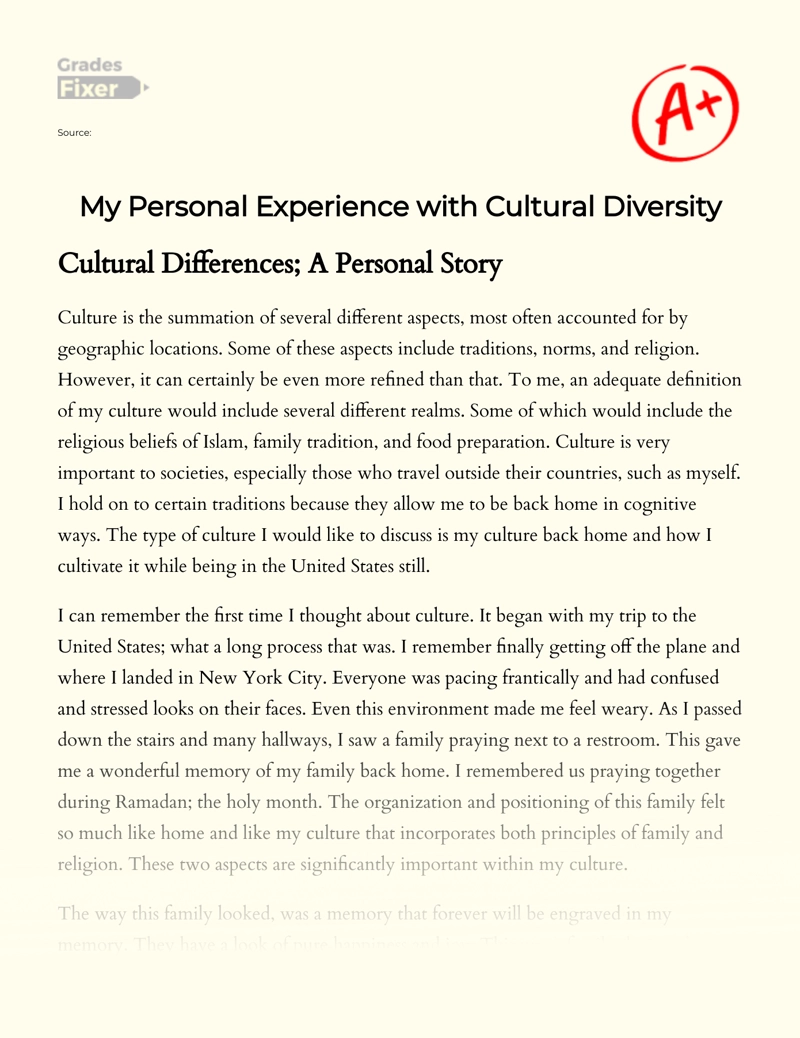
Still can’t find what you need?
Browse our vast selection of original essay samples, each expertly formatted and styled
Related Essays on Cultural Diversity
Effective communication is crucial for individuals to express their feelings, ideas, and thoughts. However, communication can be influenced by various factors, one of which is cultural differences. Cultural background and [...]
Learning about other cultures is a profound and transformative journey that goes beyond acquiring knowledge; it is a gateway to personal growth and global citizenship. This essay delves into the significance of learning about [...]
Biracial children are individuals who have parents from two different racial or ethnic groups. They are a growing segment of the population in many countries, including the United States, Canada, and the United Kingdom. The [...]
In an increasingly interconnected world, the concept of the "cultural plunge" has gained significant relevance and importance. A cultural plunge, often known as cultural immersion or cultural exposure, is an intentional and [...]
Cultural relativism is a concept that has sparked significant debate and controversy within American culture. The idea that cultural practices and beliefs should be understood within the context of the culture in which they [...]
The Muslim culture, identity and sense of belonging are founded on Islamic teachings. In the context of Muslim’s, centrality of Islamic faith is the foundation of all cultural diversities. The Islamic culture is a set of [...]
Related Topics
By clicking “Send”, you agree to our Terms of service and Privacy statement . We will occasionally send you account related emails.
Where do you want us to send this sample?
By clicking “Continue”, you agree to our terms of service and privacy policy.
Be careful. This essay is not unique
This essay was donated by a student and is likely to have been used and submitted before
Download this Sample
Free samples may contain mistakes and not unique parts
Sorry, we could not paraphrase this essay. Our professional writers can rewrite it and get you a unique paper.
Please check your inbox.
We can write you a custom essay that will follow your exact instructions and meet the deadlines. Let's fix your grades together!
Get Your Personalized Essay in 3 Hours or Less!
We use cookies to personalyze your web-site experience. By continuing we’ll assume you board with our cookie policy .
- Instructions Followed To The Letter
- Deadlines Met At Every Stage
- Unique And Plagiarism Free
Home Essay Examples Sociology
Essays on Cultural Differences
Role of integrity, respect for diversity and professionalism in promoting gender equality by un women, critical analysis of challenges associated with cultural diversity, analysis of safeguarding, equality and diversity: review of legislative basis, exploration of influence of cultural diversity on motivation of students in higher education, analysis of the concepts of equality, diversity and inclusion in workplace.
We guarantee complete confidentiality, you will receive a plagiarism-free paper!
Objective and Importance of Cultural Diversity in the Workplace
Diversity in the workplace: literature review and best practices, diversity and social identity: the example of madam walker, racial diversity and steps in diversity plan: analytical essay, diversity in law firms: analytical essay, topics in this category.
- Cultural Diversity
- Cultural Relativism
- Cultural Competence
Popular Categories
- Class Society
- Social Media Communication
- Interpersonal Relationship
- American Society
- Human Generations

We use cookies to give you the best experience possible. By continuing we’ll assume you board with our cookie policy .
Cultural differences essay
The only thing permanent in nature is ‘change’. As the time passes, the world evolves. One of those recent waves of change is that of globalization. The impact of globalization is more far reaching and lasting than any other trend. On one hand globalization provides an opportunity to business world, at the same time, it poses a great threat to people interacting with each other. The trend of globalization is therefore of particular significance to the business community. Since it expands the market, business try to go global.
However, this results into an interaction with a culture that may be quite different from the previous one. This issue is particularly for multinational companies as they send their managers on international assignments. This report is going to inquire and explore the challenges being faced by the expatriates in those assignments and how to deal with them. In the given case, there is the international assignment of a US manager in China. This assignment would definitely be full of challenges with respect to the cultural differences, as mentioned above.
To identify and analyze those challenges, it is important to overview the cultural differences that exist between the two. One of the most popular tools for analyzing the cultural differences is the set of 9 dimensions of cultural differences identified in the findings of project globe. These are performance orientation, uncertainty avoidance, humane orientation, institutional collectivism, in-group collectivism, assertiveness, gender egalitarianism, future orientation, and power distance. First of all, let us look at the dimension of performance orientation.
In US, the core focus is on individual performance and is therefore highly rewarded. As an implication, people try to give best of their performance, with giving much regards to what the group achieves as a whole. However, this is not the case with China. It is a collectivist society, where the efforts of group are more recognized, as compared to the individual ones. Therefore, if the manager is assigned to China, after reaching there, first of all, he should try to get adjusted and get in sync with his colleagues. Moreover, while motivating his staff, even then, he would need to keep this factor in mind.
Related essays:
- Homosexuality and Nurture essay
- The migration of Chinese laborers to the Hawaiian Islands in the 19th century essay
- China media industry essay
- Food Culture in San Francisco essay
In term of uncertainty avoidance, China lies at moderate level, but slightly more inclined towards uncertainty acceptance, to an extent. This factor is quite similar in the two countries. Humane orientation is the extent to which the organization rewards and recognizes a person who values fair treatment with fellow workers, altruism and other such values. The humane factor seems more working in Chinese society as compared to the American society, thus, the expatriate will need to inculcate these features while interacting with the local people.
There is a sharp contrast in the two cultures in terms of individualism. American culture ranks quite high on individual values, while Chinese values are very much inclined towards collectivism. This is true for both, in-group collectivism as well as institutional one. On the measures of assertiveness too, we can see the Chinese are comparatively less assertive than do American. This feature will particularly. Gender egalitarianism is a bit higher in US than in China, thus, the manager on international assignments needs to take care of this since his subordinates would have both, males and females.
In terms of future orientations, there is a remarkable difference in the Chinese as well as the Americans. There is quite high long term orientation among Chinese than do Americans. The Chinese are more long term planner. Thus, while making the strategies and tactics, the long term orientation of the Chinese should also be kept in mind. In terms of power distances too, there is a sharp contrast, there is a high power distance in China, but this is not the case in United States. The power distance therefore calls for more respect and formal interaction with the bosses, quite contradictory to the informal business environment in America.
From the above discussion of the cultural differences at China, one can deduce the major challenges that the manager in the given case might encounter. First of all, while working in groups, he would need to focus on group achievements and should therefore move forward with his whole group, as this will matter the most in that culture. Secondly, the long term orientation of the Chinese culture would pose another challenge. While making future plans, strategies and tactics with his colleagues, he would need to reconcile his short term orientation with the long term ones with his Chinese colleagues and counterparts.
Moreover, this would be the behavior of general public as well, so if he belongs to some discipline that requires interaction with general public, in such case, this difference would become a huge challenge. Another important feature is power distance. In Chinese set up, the power is considered to be the decisive factor for level of formality. One cannot expect the Chinese youth to be very informal with their parents, which is often the case in America. Thus, the manager needs to be conscious about it in his workplace, especially while dealing with seniors. Thus, these are the major challenges that need to be taken care of by the manager.
There are few biggest cultural shocks that would be faced by the expatriates in the given case. Furthermore, the Chinese colleagues may also be realizing the cultural differences in terms of power distance, collectivism, and planning orientations. In order to avoid the situation of conflict due to cultural differences, several actions need to be taken. Top most priority for the actions to be taken depends on the profession and the industry of the expatriate. For this report, it is assumed that the expatriate will be relocated as the marketing manager for a FMCG.
Since marketing manager needs to decide for the product’s marketing mix which includes product, price, place and promotion, he would need to be extremely careful, especially in terms of whatever his brand communicates. This as well as other needs would require a number of proactive initiatives to be taken. Few of them will be discussed in this paper. First step that should be taken is to make expatriate selection process more thorough. Second being train the expatriate and the third is to keep a constant contact with the expatriate after he has been relocated.
It is estimated that the expatriate failure rates range between 16% and 40%. Such a high rate is on account of a number of reasons. So, first important thing is to ensure selection criteria that give weight to the cultural values of the host country. For example, in the given case, the human resource department should choose such an individual who, besides the required technical skills, do posses greater level of collectivism and other such traits which are prevalent in the Chinese culture. The second action that can be taken is to provide the pre-departure training about the cultural norms in China.
It should also include the teaching of Chinese language. The third aspect can be to keep constant contact and support mechanism, possibly a post-arrival session as well, after he has reached China. These steps may help in removing the cultural differences. Moreover, he should consult his Chinese fellows as well before making any crucial organizational communication. To sum up, the course of action required to minimize cultural shocks are careful selection procedure, pre-departure and post-arrival trainings and constant support through local people of targeted countries.
Sichelschmidt, H. , & Selmer, J. (1999). Culture shock in China? – Adjustment pattern of western expatriate business managers. International Business Review. 8, 515-534. Castro, S. , & Peterson, M. (2006). Measurement metrics at aggregate levels of analysis: Implications for organization culture research and the GLOBE project [An article from: The Leadership Quarterly]. St. Louis : Elsevier. Etheredge, J. (1989). The expatriate experience: Toward a model of cultural adjustment (BRC working paper series). Shatin Hong Kong: Business Research Centre, Hong Kong Baptist College. Hofstede, G. (2003).
Culture’s Consequences: Comparing Values, Behaviors, Institutions and Organizations Across Nations. Thousand Oaks: Sage Publications, Inc. Mcginley, J. (2008). Expatriate Adjustment: Resources, Responses, and Outcomes. NYC: Vdm Verlag. Selmer, J. (2006). Language ability and adjustment: Western expatriates in China. Thunderbird International Business Review, 48(3), 347-368. The little firm that made it in China.. (2007, July 16). Australasian Business Intelligence, 3. To succeed in China, think Chinese; It’s a different culture; Western ways won’t cut it. (Viewpoint essay). (2007, September 3). Automotive News, 4.
I'm a Swede who used to work with Americans. These are the main differences I saw in our working cultures.
- Sofia Brandt used to work for Accenture before becoming a founder and lives in Gothenburg, Sweden.
- Brandt shares the aspects of Swedish work culture that might surprise people.
- Swedes get 480 days of parental leave that can be split between couples and find bragging uncouth.

This as-told-to essay is based on a transcribed conversation with Sofia Brandt, cofounder of the therapy app Ally , who lives in Gothenburg, Sweden. The conversation has been edited for length and clarity.
I worked at Accenture for seven years, primarily with American and Swedish corporations, before founding my own startup, a therapy app called Ally.
While at Accenture, I noticed a lot of differences between Swedish and American working styles. There are also aspects of working life in Sweden that I have observed as a founder that make life easier for parents and create better working conditions.
These are the main aspects of working in Sweden that other cultures might find surprising.
Support for working parents
In Sweden, parental leave has become an incubator for new ideas and people often change career direction during their leave. You get 16 months off work to care for a new child, often at full pay, if your company tops up the government provision. You get 480 days of parental allowance shared between parents per child from the state-governed insurance fund.
For the first 390 days, you get around 80% of your salary. You get a smaller amount for the remaining 90 days, around 15 euros a day. That support gives people time to consider their careers and reflect on ideas while caring for their newborn.
During my 12 months of maternity leave from Accenture, I came up with the idea of our startup. Alongside caring for my newborn, I had long stroller walks and other carved-out time spent thinking about my budding business idea and iterating with my fellow co-founders. Being on leave gives you time to think with some distance from everyday life.
I have been financially supported during my parental leave and as my children grow. As a startup founder, you're initially paid very little. We coped because of Sweden's financial provisions for parents.
The subsidized childcare system means we pay less than $125 a month to have both kids at full-time day care, compared to our friends in San Francisco, who pay about $2,900 monthly per child.
Sweden also has "vård av barn", or VAB, a policy where you can take paid days off to stay home and care for your sick child. There's an open culture around it, too, with people saying they're VAB-ing in their out-of-office responses and Slack statuses.
Fathers also have to take three months of parental leave, which is great because it pushes dads to take more of a front seat in their children's lives and gives working moms more flexibility. Out of the 480 days, at least 90 have to be taken by the parent who hasn't taken the majority. Most couples try to split it 50/50, but you can split it however you like. This means that one parent can take 390 days, and the other takes 90 days, or you can split it in half or anywhere between.
Related stories
In 2022, I was about to have my second child. I'd been running Ally for several years, but it wasn't a good time to take my maternity leave. My husband did the first six months, and I took time off afterward. He got comments, mainly from older people, who thought it strange. But for us, it worked perfectly.
Humble approach to work
While at Accenture, I noticed differences between Swedish and American working styles. In Sweden, work-life balance is important, and what you do in your free time plays a bigger part in your identity, whereas it's the opposite in the US.
Sweden has a built-in cultural code called "jantelagen ," where everyone is considered equal. Humility is essential, and talking about money is generally off-limits.
In America, individual success is celebrated. You are loud about your wins and celebrate earning money.
Bragging in Sweden and exaggerating your achievements or being overly flashy is risky, as you may appear obnoxious or crude — but it wouldn't formally jeopardize your job.
When recruiting employees in Sweden, you have to ask yourself whether the candidate is holding back, and in most cases, they are.
You have to push candidates to say what they've been doing, and with international recruiters, Swedes might lose out because they won't talk up their full potential.
My cofounders and I are struggling with "jantelagen." Our all-female founding team needs to pitch ourselves in this tough economic climate. There's a fine line between humility and ambition, and talking to international investors with our Swedish nature is challenging.
Flat companies
We built Ally to be non-hierarchical, but that's not just a startup thing. In Sweden, companies have almost no hierarchy, and everyone has the right to speak up.
You work as a team of individuals, and everybody is accountable. But you must get everybody on board to make a change or decision. It means putting a lot of trust in people to get things done independently. It also creates a strong individual responsibility toward a company's mission.
Collective bargaining, another tenet of Swedish working culture, prioritizes employee needs and gives more power to the employee.
Many people are trade union members, and employers often encourage it. With the union comes greater worker power and expertise in negotiating pay, benefits, and hours, rather than having to fend for yourself and negotiate independently.
Having seen it from both sides, many of these innately Swedish traits help build sustainable businesses over time and safeguard the interests of the employer and employee so everyone can work together positively.
- Main content
Differences in Communication Across Cultures Essay
Elements of communication in african american culture.
African American nonverbal communication, such as gestures, is a unique manner of conveying thought patterns without using words. These motions might be subtle and enigmatic or bright and self-assured (Segerstråle & Molnár, 2018). The physique communicates vital information in a sophisticated and robust dialect. Certain expressions demonstrate togetherness and acknowledge the links that connect African Americans as families, society members, and individuals sharing commonalities (Hall et al., 2017). At the heart of these movements is the dap, which has been used to represent solidarity, bravery, rebellion, and opposition for millennia. For instance, Hall et al. (2017) stated that dap transformed into the Black Power embrace. Today, African Americans perform variants of these cooperation gestures, ranging from the first bump to the high-five (Hall et al., 2017). Wobbling the head down with enough mobility demonstrates respect for various people of color cultures.
However, the up nod, the grip, and the dap are typically male African American pleasantries. The up nod indicates that the other person is being observed and may not wish or be able to speak, whereas the grip indicates a deep association (Hall et al., 2017). Hall et al. (2017) insinuated that giving dap, a gesture of regard, can also be used in place of a greeting. It is not always essential to use words to convey that an individual or something is not deserving of detailed concern (Segerstråle & Molnár, 2018). Additionally, dismissing gestures is straightforward and understandable since they can convey scorn, disapproval, displeasure, and impatience.
African Americans frequently prefer to communicate with their entire body and hence require a lot of physical space around them to tense up and react. Consequently, some African Americans enjoy getting in a person’s space when conversing. Their closeness to the individual with whom they are conversing can convey their feelings and identification (Bonvillain, 2019). This seeming paradox between a desire for space and intimacy appears contextual. Discourse with people of the same society tends to be more energetic and immediate contact (Bonvillain, 2019). For some African Americans, appropriate personal boundaries are nearer 6-12 inches or an arm’s distance apart (Bonvillain, 2019). When African Americans experience a strong emotional attachment, such as joy or fury, they may gravitate toward and aside from the other person and toward and far from near vicinity.
In African American civilization, verbal conversation and speech are used to communicate principles, ideas, and practices to others. Dialogue reflects tradition and a shared commonality for members of African American society (Bonvillain, 2019). Engagement with representatives of other cultural communities may be developed to ensure a remark about African American culture or the progress of African-Americans inside the European American community. While African American adults typically maintain a straight stare when conversing with others to demonstrate attentiveness, African American adolescents frequently avoid looking at an instructor when conversing, particularly when being scolded and out of regard (Yang, 2020). African Americans frequently gaze into someone else’s eyes to indicate that they wish to ask for clarification.
Elements of communication in Chinese and Mexican cultures
I intend to work in New York City, which probably has numerous multicultural communities interacting with each other. In New York, 6% of the population comprises Chinese, and 27.5% comprises the Mexican population (Timberlake et al., 2017).
As a result of their attempt to keep successful relationships, the Chinese place a premium on informal communication; they use less language and concentrate more on stance, attitude, and manner of speech to convey meaning (Cai, 2019). Their language is frequently confusing, and they frequently underestimate their points. Thus, this is performed to ensure unity throughout the talk and avoid embarrassment on either side of the interaction.
Chinese is a phonetic language, which can have several interpretations depending on how a term is spoken. For instance, ‘ma’ can refer to a reprimand, cotton, horse, or mother, contingent on the presenter’s intonation (Cai, 2019). In terms of personal space, the Chinese are accustomed to maintaining little over an arm’s distance apart, and this separation will be greater while talking to strangers. Chinese people often avoid physical interaction with people unless it is imperative (Cai, 2019). They will avoid physical contact during conversations unless they speak with a close relative, personal friend, or companion. In principle, direct eye contact is preferred over secondary eye contact since it is regarded as a show of civility (Cai, 2019). When speaking with an unknown elder, one may bow their head to show reverence by lowering their eyes. In Chinese communication, quietness is a critical and strategic attending skill (Cai, 2019). Pausing before responding implies that someone has given the question adequate thought and care and demonstrates civility and respect.
On the other hand, while most Mexicans accept eye contact, extended eye contact is frequently regarded as impolite. Intimate or confidential interactions require extended eye contact (Jackson et al., 2019). Obstructed gaze is frequently a defining characteristic of Mexican adults and youngsters. Most Mexicans demonstrate their friendliness and psychological excitement through their immediate contact with those they chat with (Jackson et al., 2019). Mexicans frequently maintain six to eight inches closer to one another than European Americans do when conversing. Mexican frequently touch their relatives and friends while conversing, often with a pat on the back.
Due to their great connection to the community, Mexicans regularly prefer this more normal mode of communication with family members. A common greeting is to embrace or kiss on the cheek. Mexicans, particularly ladies, will be extremely expressive in their vocalizations, recognizing the effective undercurrent of their discourse (Jackson et al., 2019). Therefore, this is demonstrated through vocal variation and pitch severity. The natural warmth of Mexican communication culture is frequently evident in the seductive and sensitive conversational style that many persons employ and their apparent love of discussion.
Specific cultural problems that may impact behavioral health treatment with Asians and Latinx
The way people express and experience their ailments is influenced by their cultural factors. It can influence a person’s decision to acknowledge and discuss medical conditions, subjective distress, or both. Each society has a unique perspective on behavioral health. Since these Asian and Latinx cultures avoid body interaction with those they do not regard as a family or near relatives, clinicians have a tough time detecting diseases in these communities. Due to the fact that Chinese and Mexican individuals are more susceptible to developing physical symptoms than mental issues, their screening, and therapeutic plan are affected. Additionally, the two cultures have an increasing stigma surrounding behavioral health, and its related concerns are viewed as a show of desperation and something to conceal. As a result, it may be more difficult for those suffering to talk candidly and seek assistance.
To address the issues mentioned above, I would work to eliminate cultural differences in behavioral health structures and infrastructure. By establishing a professional connection based on approachability, sincerity, tolerance, and cultural sensitivity through face-to-face dialogues in diverse groups, a human-to-human interaction is developed, eroding the hierarchal structure. Thus, this form of constructive balance and engagement allows for the education of individuals about behavioral disorders and medical services, thereby combating stigmatization. By understanding how to create good behavioral health among diverse ethnic groups by tackling systemic difficulties in healthcare, people from these civilizations can assist themselves.
Bonvillain, N. (2019). Language, culture, and communication: The meaning of messages. Rowman & Littlefield.
Cai, M. (2019). Reflection of Cultural Difference of the East and the West in Nonverbal Communication . Advances in Social Science, Education and Humanities Research, 311, 288-296.
Hall, B. J., Covarrubias, P. O., & Kirschbaum, K. A. (2017). Among cultures: The challenge of communication. Routledge.
Jackson, K. F., Wolven, T., & Crudup, C. (2019). Parental ethnic-racial socialization in multiracial Mexican families. Journal of Ethnic & Cultural Diversity in Social Work, 28(2), 165-190.
Segerstråle, U., & Molnár, P. (2018). Nonverbal communication: Where nature meets culture. Routledge.
Timberlake, J. M., & Johns-Wolfe, E. (2017). Neighborhood ethnoracial composition and gentrification in Chicago and New York, 1980 to 2010. Urban Affairs Review, 53(2), 236-272.
Yang, P. (2020). Intercultural nonverbal communication competence as intercultural responsiveness in the second language learning classroom. In Language Learning and Literacy: Breakthroughs in Research and Practice (pp.339-359). IGI Global.
- Chicago (A-D)
- Chicago (N-B)
IvyPanda. (2023, March 21). Differences in Communication Across Cultures. https://ivypanda.com/essays/differences-in-communication-across-cultures/
"Differences in Communication Across Cultures." IvyPanda , 21 Mar. 2023, ivypanda.com/essays/differences-in-communication-across-cultures/.
IvyPanda . (2023) 'Differences in Communication Across Cultures'. 21 March.
IvyPanda . 2023. "Differences in Communication Across Cultures." March 21, 2023. https://ivypanda.com/essays/differences-in-communication-across-cultures/.
1. IvyPanda . "Differences in Communication Across Cultures." March 21, 2023. https://ivypanda.com/essays/differences-in-communication-across-cultures/.
Bibliography
IvyPanda . "Differences in Communication Across Cultures." March 21, 2023. https://ivypanda.com/essays/differences-in-communication-across-cultures/.
- Latinx Art as a Means of Expressing Ethnic Identity
- “With a Nod and the Clip of the Hat” by Grosskopf
- Improving the Way Snap-A-Dap Operates
- Healthcare Disparities in Latinx and and the Euro-American Communities
- Group-Affirmation of Latinx and Mexican Americans in the US
- Latino Characters in the Film “Machete”
- Autoimmunity, Its Effect on the Body and Methods of Its Treatment
- State Standards vs. Developmentally Appropriate Practices
- Health Promotion: Depression Awareness in Teenagers
- Program and Curriculum Planning
- Emotions Across American and Chinese Cultures
- The US and Japan Cultural Comparison
- Cultural Differences and Language Structure
- Cultural Differences and Origins of Conflict
- Mexican vs. American Cultural Differences in Business
- Share full article
Advertisement
Supported by
Guest Essay
There’s No Such Thing as an American Bible

By Esau McCaulley
Contributing Opinion Writer
The presumptive Republican nominee for president of the United States, who weeks ago started selling shoes , is now peddling Bibles. During Holy Week.
What’s special about this Bible? So many things. For example, according to a promotional website, it’s the only Bible endorsed by Donald Trump. It’s also the only one endorsed by the country singer Lee Greenwood. Admittedly, the translation isn’t distinctive — it’s your standard King James Version — but the features are unique. This Bible includes the Constitution, the Bill of Rights, the Declaration of Independence, the Pledge of Allegiance and part of the lyrics of Mr. Greenwood’s song “God Bless the USA.” Perhaps most striking, the cover of the Bible does not include a cross or any symbol of the Christian tradition; instead, it is emblazoned with the American flag.
While part of me wants to laugh at the absurdity of it — and marvel at the sheer audacity — I find the messaging unsettling and deeply wrong. This God Bless the USA Bible, as it’s officially named, focuses on God’s blessing of one particular people. That is both its danger and, no doubt for some, its appeal.
Whether this Bible is an example of Christian nationalism I will leave to others. It is at least an example of Christian syncretism, a linking of certain myths about American exceptionalism and the Christian faith. This is the American church’s consistent folly: thinking that we are the protagonists in a story that began long before us and whose main character is in fact the Almighty.
Holy Week is the most sacred portion of the Christian calendar, a time when the church recounts the central events of our faith’s narrative, climaxing in the death and resurrection of Jesus. That story, unlike the parochial God Bless the USA Bible, does not belong to any culture.
Holy Week is celebrated on every continent and in too many languages to number. Some of the immigrants Mr. Trump declared were “ poisoning the blood” of America will probably shout “Christ is risen!” this Easter. Many of them come from the largely Christian regions of Latin America and the Caribbean. They may have entered the country with Bibles in their native tongues nestled securely among their other belongings.
One of the beauties of the Christian faith is that it leaps over the lines dividing countries, leading the faithful to call fellow believers from very different cultures brothers and sisters. Most of the members of this international community consist of the poor living in Africa, Asia and Latin America. There are more Spanish-speaking Christians than English- speaking ones .
If there are central messages that emerge from the variety of services that take place during Holy Week, for many Christians they are the setting aside of power to serve, the supremacy of love, the offer of divine forgiveness and the vulnerability of a crucified God.
This is not the stuff of moneymaking schemes or American presidential campaigns.
It was Pontius Pilate , standing in as the representative of the Roman Empire, who sentenced Jesus to death. The Easter story reminds believers that empires are more than willing to sacrifice the innocent if it allows rulers to stay in power. The church sees Christ’s resurrection as liberating the believer from the power of sin. The story challenges imperial modes of thinking, supplanting the endless pursuit of power with the primacy of love and service.
Easter, using the language of St. Augustine, represents the victory of the City of God over the City of Man. It declares the limits of the moral reasoning of nation-states and has fortified Christians who’ve resisted evil regimes such as fascists in South America, Nazis in Germany, apartheid in South Africa and segregation in the United States.
For any politician to suppose that a nation’s founding documents and a country music song can stand side by side with biblical texts fails at a theological and a moral level. I can’t imagine people in other countries going for anything like it. It is hard to picture a modern “God Bless England” Bible with elements of British common law appended to Christianity’s most sacred texts.
I am glad for the freedoms that we share as Americans. But the idea of a Bible explicitly made for one nation displays a misunderstanding of the story the Bible attempts to tell. The Christian narrative culminates in the creation of the Kingdom (and family) of God, a transnational community united by faith and mutual love.
Roman Catholics , Anglicans and Orthodox Christians, who together claim around 1.5 billion members, describe the Bible as a final authority in matters of faith. Evangelicals, who have overwhelmingly supported Mr. Trump over the course of three election cycles, are known for their focus on Scripture, too. None of these traditions cite or refer to any American political documents in their doctrinal statements — and for good reason.
This Bible may be unique in its form, but the agenda it pursues has recurred throughout history. Christianity is often either co-opted or suppressed; it is rarely given the space to be itself. African American Christians have long struggled to disentangle biblical texts from their misuse in the United States. There is a reason that the abolitionist Frederick Douglass said that between the Christianity of this land (America) and the Christianity of Christ, he recognized the “widest possible difference.”
And while Christianity was used to give theological cover to North American race-based chattel slavery, it was violently attacked in places like El Salvador and Uganda, when leaders including the archbishops Oscar Romero and Janani Luwum spoke out against political corruption.
The work of the church is to remain constantly vigilant to maintain its independence and the credibility of its witness. In the case of this particular Bible, discerning what is happening is not difficult. Christians are being played. Rather than being an appropriate time to debut a patriotic Bible, Easter season is an opportune moment for the church to recover the testimony of the supremacy of the cross over any flag, especially one on the cover of a Bible.
Esau McCaulley ( @esaumccaulley ) is a contributing Opinion writer, the author of “ How Far to the Promised Land: One Black Family’s Story of Hope and Survival in the American South ” and an associate professor of New Testament at Wheaton College.
The Times is committed to publishing a diversity of letters to the editor. We’d like to hear what you think about this or any of our articles. Here are some tips . And here’s our email: [email protected] .
Follow The New York Times Opinion section on Facebook , Instagram , TikTok , WhatsApp , X and Threads .
Beyoncé Puts a Poignant Twist on the Beatles’ ‘Blackbird’

Every item on this page was chosen by an ELLE editor. We may earn commission on some of the items you choose to buy.
The collaboration is especially poignant, when considering the original meaning of the Beatles’ “Blackbird” and the racism that is still present in the music industry, particularly in the country music scene. As Beyoncé put it in her introduction for Cowboy Carter:
This album has been over five years in the making. It was born out of an experience that I had years ago where I did not feel welcomed…and it was very clear that I wasn’t. But, because of that experience, I did a deeper dive into the history of Country music and studied our rich musical archive. It feels good to see how music can unite so many people around the world, while also amplifying the voices of some of the people who have dedicated so much of their lives educating on our musical history. The criticisms I faced when I first entered this genre forced me to propel past the limitations that were put on me.
Here, an overview of what to know about the song, its lyrics, and the significance behind why Beyoncé covered it.
What the Four Country Singers on “Blackbiird” Said About Beyoncé and the Song
The lyrics to beyoncé’s “blackbiird”, the original “blackbird” lyrics, the original meaning of “blackbird”.
“Blackbird” originally came out in 1968 and was written by Paul McCartney as a hopeful message to champion the Civil Rights Movement. In September 2018, McCartney spoke to GQ about the song’s origins and how the song was particularly intended to encourage Black girls fighting oppression.
“I was sitting around with my acoustic guitar and I’d heard about the civil rights troubles that were happening in the ’60s in Alabama, Mississippi, Little Rock in particular,” he told GQ . “So that was in my mind, and I just thought it would be really good if I could write something that if it ever reached any of the people going through those problems, it might give them a little bit of hope. So, I wrote ‘Blackbird.’ And in England, a bird is a girl, so I was thinking of a Black girl going through [this], you know, now’s your time to arise, set yourself free, and take these broken wings. One of the nice things about music is that you know a lot of people listening to you are going to take seriously what you’re saying in the song so I’m very proud of the fact that the Beatles’ output is always pretty positive.”
He added: “There’s people out there who are going through some problems. Hopefully, people out there will listen to it and think, ‘oh yeah, it’s not just me alone going through this. This is something and also something I can fix.’”
Beyoncé’s collaborators on the track—Tanner Adell, Brittney Spencer, Tiera Kennedy, and Reyna Roberts—all shared Instagram posts expressing excitement and gratitude about being featured on Cowboy Carter .
“‘Take these broken wings and learn to fly,’” Kennedy wrote on Instagram. “I cannot believe it. God is so good. I’m on a @beyonce record. And not on one but TWO songs. You can catch me on those harms on ‘Tyrant’ too! I’ve been in Nashville for almost 8 years chasing this country music dream. There have been a lot of highs and lows along the way and this—being on Beyonce’s album takes the cake. I grew up listening to her music, practicing her runs over and over. Whenever people would ask me, ‘Who’s your dream collab?’ the answer was always Beyonce but it was such a far away dream because BEYONCÉ?! I couldn’t be more thankful. Thank you Beyoncé for shining your light. This album is so important. It will not only change the future of country music but music as a whole and I cannot wait to watch it unfold. Thank you thank you thank you thank you. ”
Adell wrote in her post, “I always say Beyoncé raised me. Beyoncé taught me how to be soft but strong. A force of nature. I’ve watched her be forged like metal in the fire of this industry and she remained poised, and grateful. The last two years in Nashville I have kept my head down, counted all my blessings big and small, and tried to perfect this craft of my artistry. When I saw Renaissance last summer, I knew I was NOT working hard enough. I was reminded again watching the Renaissance documentary. I sat in that theatre bawling my eyes out and said out loud, I will work with Beyoncé in 2024. NO IDEA HOW I WAS GONNA DO THAT 😂 but I felt it in my bones. Go back through every interview I have done, I get asked a million times ‘who is your dream collab’ and I have answered the same every time. Beyoncé. Thank you Queen Bey for busting these gates wide open with this album. For letting your light spill over onto MY head. I am humbled by the thought. love you mama 🐝”
You can read all four singers’ Instagram posts below:
The lyrics of “Blackbiird,” Beyoncé’s version, are full of hope. Read them below, via Genius , and also listen to the song.
Verse 1: Beyoncé Blackbird singing in the dead of night Take these broken wings and learn to fly All your life You were only waiting for this moment to arise (You were only waiting for this moment to arise) Verse 2: Beyoncé Blackbird singing in the dead of night (Dead of night, night) Take these sunken eyes and learn to see (Learn to see all of your life) All your life You were only waiting for this moment to be free Chorus: Beyoncé Blackbird fly (Blackbird, blackbird, fly, fly, fly, fly) Blackbird fly (Blackbird, blackbird, fly, fly, fly, fly) Into the light of a dark, black night Bridge: Beyoncé Ooh-ooh-ooh-ooh Ooh-ooh Chorus: Beyoncé Blackbird fly (Fly) Blackbird fly (Fly) Into the light of a dark, black night Verse 3: Brittney Spencer, Tiera Kennedy, Reyna Roberts, and Tanner Adell Blackbird singing in the dead of night Take these broken wings and learn to fly (Learn to fly, learn to fly) All your life You were only waiting for this moment to arise Outro: Reyna Roberts, Tanner Adell, and Beyoncé You were only waiting for this moment to arise You were only waiting for this moment to arise
Here are the original lyrics by the Beatles, via Genius, along with the song to listen to:
Verse 1 Blackbird singing in the dead of night Take these broken wings and learn to fly All your life, you were only waiting For this moment to arise Verse 2 Blackbird singing in the dead of night Take these sunken eyes and learn to see All your life, you were only waiting For this moment to be free Chorus Blackbird fly Blackbird fly Into the light Of a dark, black night Blackbird fly Blackbird fly Into the light Of a dark, black night Verse 3 Blackbird singing in the dead of night Take these broken wings and learn to fly All your life, you were only waiting For this moment to arise Outro You were only waiting For this moment to arise You were only waiting For this moment to arise

Beyoncé Triumphs Over Rejection on 'Cowboy Carter'

What Beyoncé’s ‘Sweet Honey Buckiin’ Lyrics Mean

What Beyoncé’s ‘Bodyguard’ Lyrics Mean
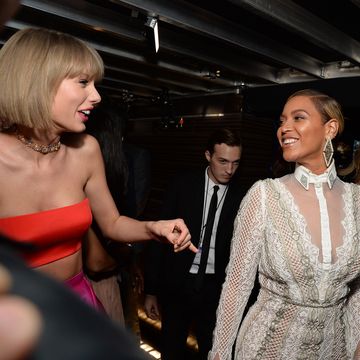
Did Taylor Do Background Vocals on ‘Bodyguard’?

Beyoncé Sings Italian Opera on Her Country Album

Beyoncé Collabs with Younger Daughter Rumi

Beyoncé and Miley Cyrus’ ‘II MOST WANTED‘ Lyrics

Beyoncé’s ‘Jolene’ Lyrics Reimagine the Classic

Everything We Know About Beyoncé’s Next Album

Meet Cherry Seaborn, Ed Sheeran's Wife and Muse

Normani’s Album Is Finally Coming This Year

IMAGES
VIDEO
COMMENTS
Cultural Differences Essay: Variety alludes to the traits that individuals use to affirm themselves as for other people, "that individual is not the same as me." These properties incorporate segment factors (race, sexual orientation, and age) just as qualities and cultural standards. Cultural variety is the nature of various societies, instead of monoculture, the worldwide monoculture, […]
15 Cultural Differences Examples. Examples of cultural differences include differences in values, norms, beliefs, mores, rituals, mannerisms, and expressions between different societies. We can also identify cultural differences in eating and drinking habits, religious beliefs, moral beliefs, rituals, time management, sanitation, greeting, gift ...
The authors unpack their recent research on how diversity works in remote teams, concluding that benefits and drawbacks can be explained by how teams manage the two facets of diversity: personal ...
Culture is a system of shared beliefs, values , customs and behaviours. School culture is based on people in it. Each school has a different phenomenon or mentality of... Cultural Diversity. Topics: India teacher, Mentality of school life, People of other cultures, School culture, The Culture. 10.
A community essay can also be considered a cultural diversity essay. In fact, you can think of the community essay as a subcategory of the cultural diversity essay. However, there is a key difference between a community essay and a cultural diversity essay, which we will illustrate below.
Pick Your Topic. When writing an essay on cultural differences, the first question to address is which cultures to write about. The assignment you are given may ask you to compare and contrast two different cultures, or to compare your own culture to a culture with which you are unfamiliar. Pick a culture you are interested in, within the ...
Cultural patterns strengthen the cultural values and beliefs, which comprise the cultural identification of a particular community. The differences in the cultures across communities call for a clear understanding of the cultures before one can interpret an experience to avoid cultural biasness and frustrations because different things mean or ...
It can be the interaction with colleagues at work that will require respect from the older workers or the proper greetings for neighbors to avoid ill intentions. This essay, "Cultural Differences and Their Impact" is published exclusively on IvyPanda's free essay examples database. You can use it for research and reference purposes to write ...
Bridging cultural differences. It's all about understanding. These talks explore perspective -- looking past the stereotype and learning who people are, what they do and why they do it to build new cultural understandings. ... Jamila Lyiscott is a "tri-tongued orator;" in her powerful spoken-word essay "Broken English," she celebrates ...
To write an effective cultural diversity essay, it is crucial to have a clear understanding of what cultural diversity truly means. Cultural diversity refers to the coexistence of different cultures, values, and traditions within a society. It encompasses differences in language, religion, beliefs, customs, and practices.
Today's globalized world is shaped by frequent intercultural encounters. Footnote 1 Certain individuals perceive cultural differences (and hence cultural diversity) in certain situations as interesting and enriching, but there are also encounters that create frustration and disappointment, sometimes for reasons we may not understand. Therefore, a good understanding of cultural differences ...
Writing a Conclusion for a Culture Essay. After you have written the main part of your essay, you should summarize all of the above. To do this, you must analyze all the information and briefly state it to the reader. It is important not to deviate from your opinion and only try to back it up with appropriate phrases.
Introduction. Introduction: Today, people with different cultures and countries work together at the workplace, more international students are on their journey to acquire academic knowledge and more people are travelling the world. Hence, it is fundamental to understand these cultural differences to avoid any miscommunication. Working together in a diverse culture has not been easy.
Describe. Culture is the specialized and intergenerational collection of one group's ideas, beliefs, and customs. In our increasingly globalized society, it is important to be conscious of cultural differences in order to negotiate effectively. According to research, there are seven major cultural distinctions that have the biggest impact on ...
Сultural Identity Essay Examples. First and foremost, a cultural identity essay is the one where you share your vision of the world and personality. Below is an example that you might consider when writing your next cultural identity essay. I was born in Italy to a German family. My mother comes from the capital of Germany - Berlin, while my ...
EssayEdge > Blog > Essay About Cultural Differences: Writing Guidelines. Updated: March 3, 2023. It is often difficult for international students to know what to write for their personal statement for US universities. My advice is to write about what you know best: your dreams and goals. Cultural diversity is a major factor in the composition ...
Most of the cultural differences can be noticed in the specificities of communication. For example, highly people-oriented cultures are usually extremely open and easy going. Individuals are much more likely to remain in close proximity, engage in deep conversations, and keep eye contact (Atkinson, 2020). On the other hand, all the actions can ...
Cultural Differences Definition. Cultural groups can differ widely in their beliefs about what is true, good, and efficient. The study of cultural differences combines perspectives in psychology and anthropology to understand a society's signature pattern of beliefs, behavior, and social institutions and how these patterns compare and contrast to those of other cultural groups.
Introduction: Our culture molds us, molds our behavior, and our sense of self. Our way of life is defined by the shared language, ideas, values, conventions, behaviors, and material items that are passed down from generation to generation. We are modified by others and we modified others based on our respective culture, based in our mannerism ...
Essays on Cultural Differences. Role of Integrity, Respect for Diversity and Professionalism in Promoting Gender Equality by UN Women . that are required from applicants (UN Women Leadership, n.d). The organization uses an ethnocentric strategy in recruitment as the headquarter sets out the selection strategy which creates an unified culture ...
These differences are ideology, socialization, discourse, and face systems. These four cultural differences served as motivation and explanation for the rejection of tourism by the Toraja people. Scollon and Scollon describe ideology as the groups…. 707 Words. 3 Pages.
Cultural differences essay. The only thing permanent in nature is 'change'. As the time passes, the world evolves. One of those recent waves of change is that of globalization. The impact of globalization is more far reaching and lasting than any other trend. On one hand globalization provides an opportunity to business world, at the same ...
A.I.-Generated Garbage Is Polluting Our Culture. March 29, 2024. Jim Stoten. Share full article. 602. By Erik Hoel. Mr. Hoel is a neuroscientist and novelist and the author of The Intrinsic ...
You get 16 months off work to care for a new child, often at full pay, if your company tops up the government provision. You get 480 days of parental allowance shared between parents per child ...
Elements of communication in African American culture. African American nonverbal communication, such as gestures, is a unique manner of conveying thought patterns without using words. These motions might be subtle and enigmatic or bright and self-assured (Segerstråle & Molnár, 2018). The physique communicates vital information in a ...
Ms. Spiers, a contributing Opinion writer, is a journalist and digital media strategist. James and Jennifer Crumbley never anticipated that their then-15-year-old son, Ethan, would use the 9 ...
The Christian narrative culminates in the creation of the Kingdom (and family) of God, a transnational community united by faith and mutual love. Roman Catholics, Anglicans and Orthodox Christians ...
Take these sunken eyes and learn to see (Learn to see all of your life) All your life. You were only waiting for this moment to be free. Chorus: Beyoncé. Blackbird fly (Blackbird, blackbird, fly ...